We had to schedule a trip to the US in February to see some doctors. We decided to spend a couple of days in Paris before going to the US then spend eight more days in France on our return trip.
The Musée d’Orsay is on the Left Bank of the Seine. It is housed in the former Gare d’Orsay, a Beaux-Arts railway station built between 1898 and 1900. The museum holds mainly French art dating from 1848 to 1914, including paintings, sculptures, furniture, and photography.
To be completely honest, the main reason I wanted to visit the Musée d’Orsay was to see the view from the clock. We never did find the view from the clock, but we enjoyed our visit, especially the sculptures. Here are just a few pictures of the museum and the sculptures on display.
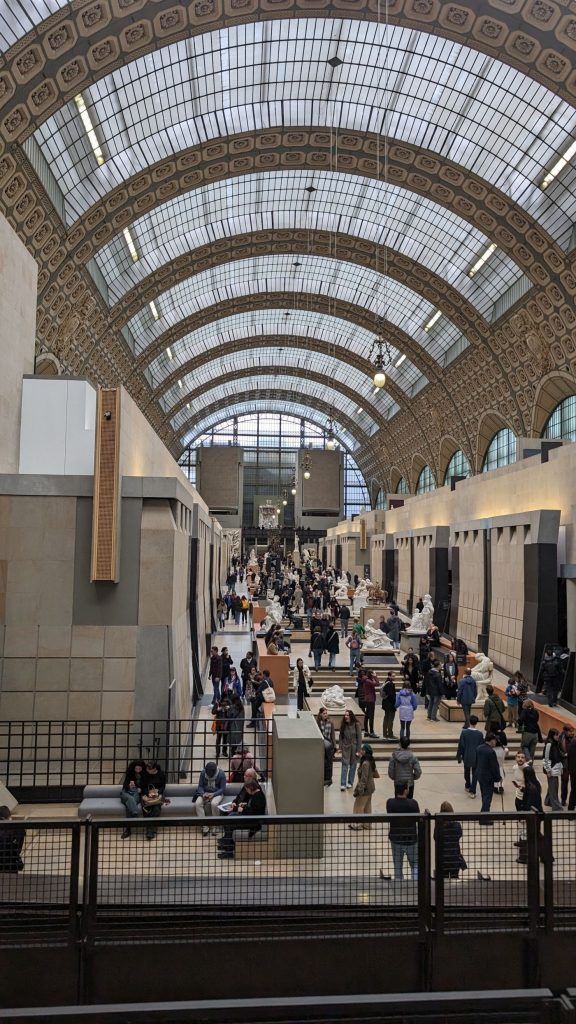
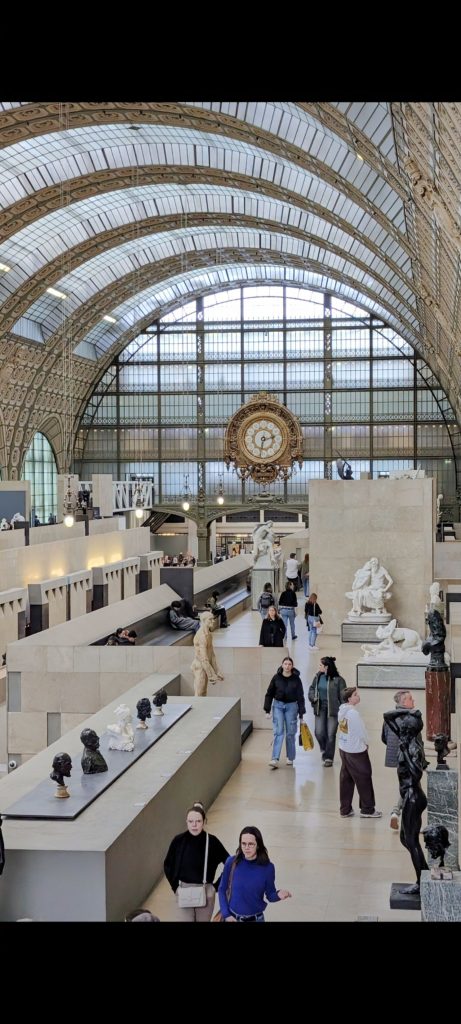
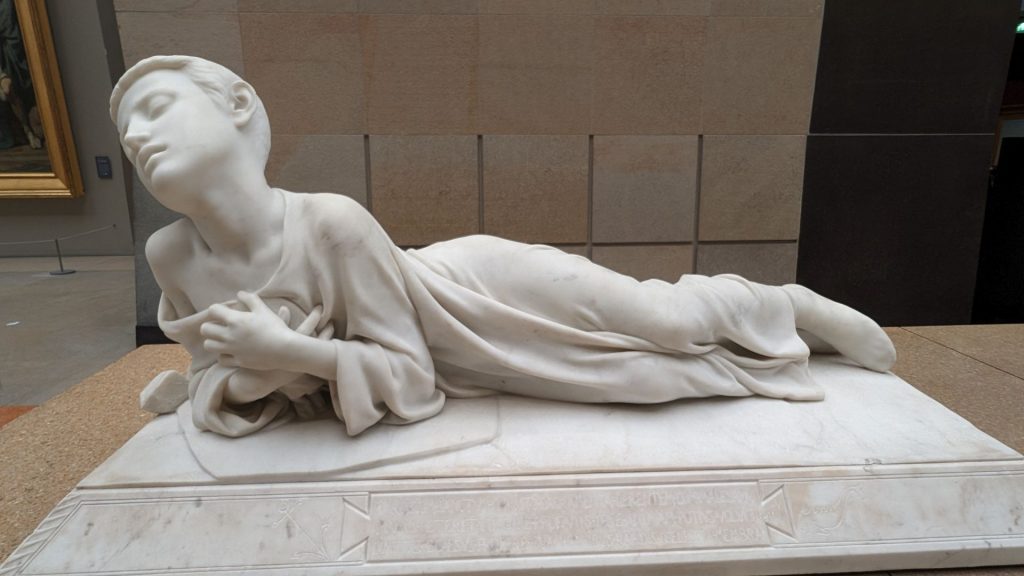
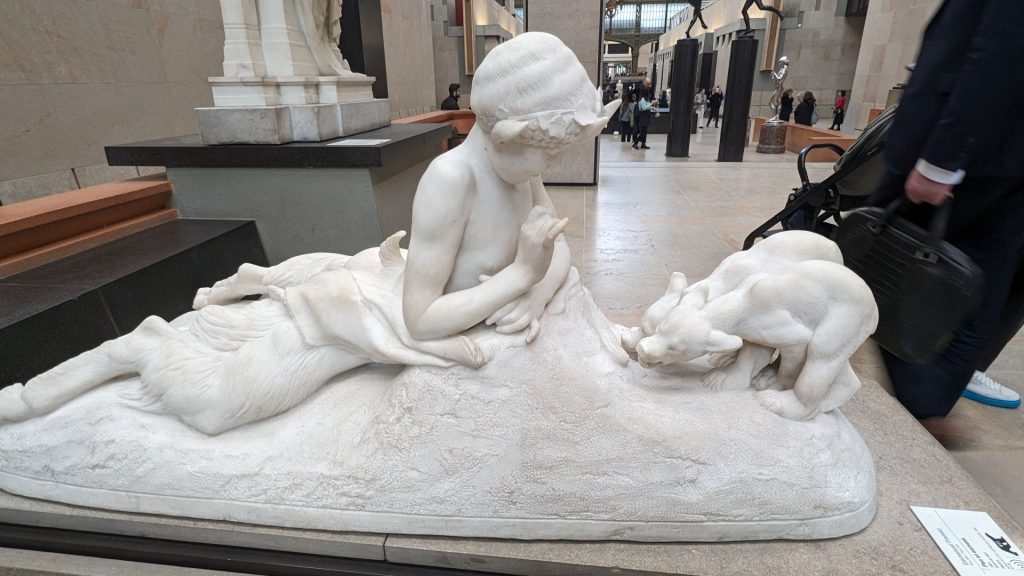
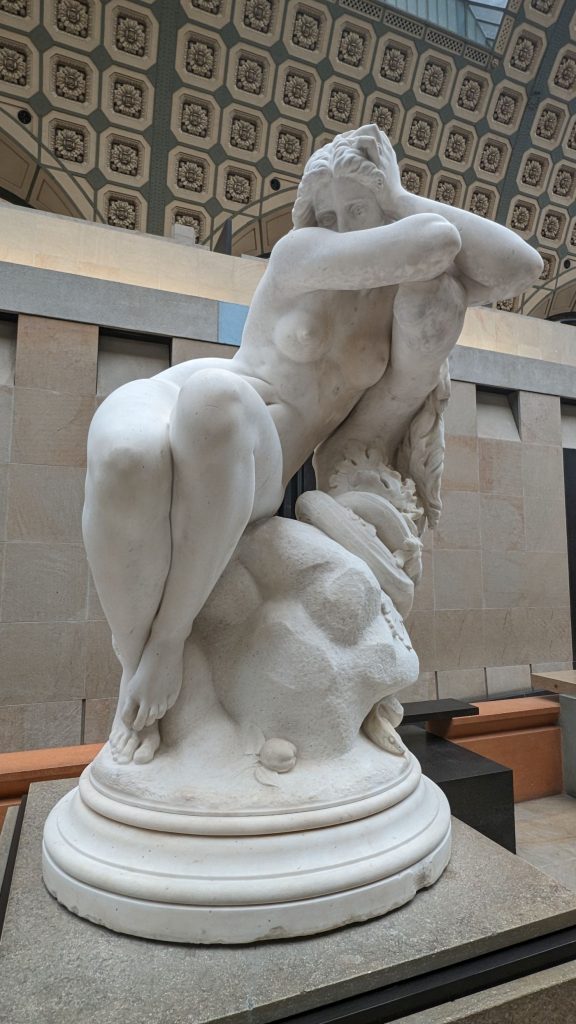
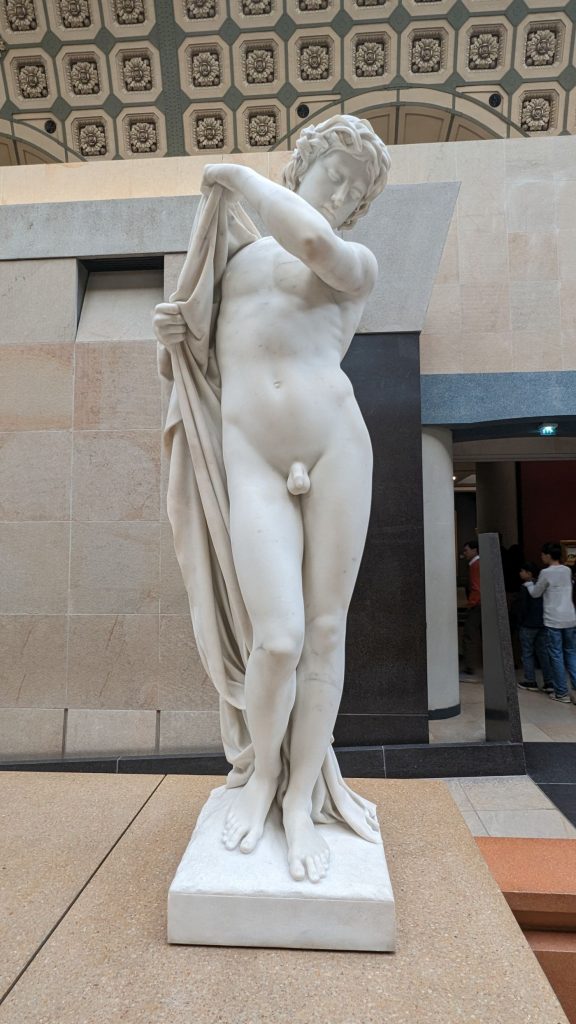
This next sculpture – Ugolin -has a rather dark back story.
Artist Jean-Baptiste Carpeaux found inspiration in Canto 33 of Dante’s Divine Comedy which describes the encounter in Hell between the writer, led by Virgil, and Ugolino della Gherardesca. The count recounts the punishment he has suffered.
In 13th-century Pisa, having betrayed the party of the Gibelins who favored the Emperor in his struggle against the Pope, who was supported by the Guelfes, Ugolino was imprisoned in a tower. His rival, the archbishop Ubaldini, condemned him to starve to death in jail. According to legend, Ugolino died after eating his own sons and grandsons who shared his cell.
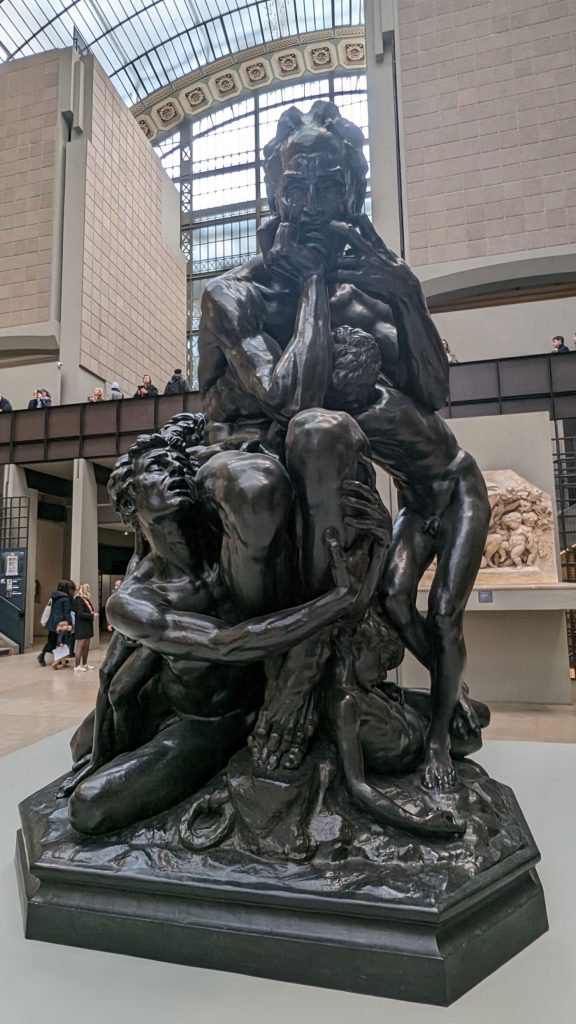
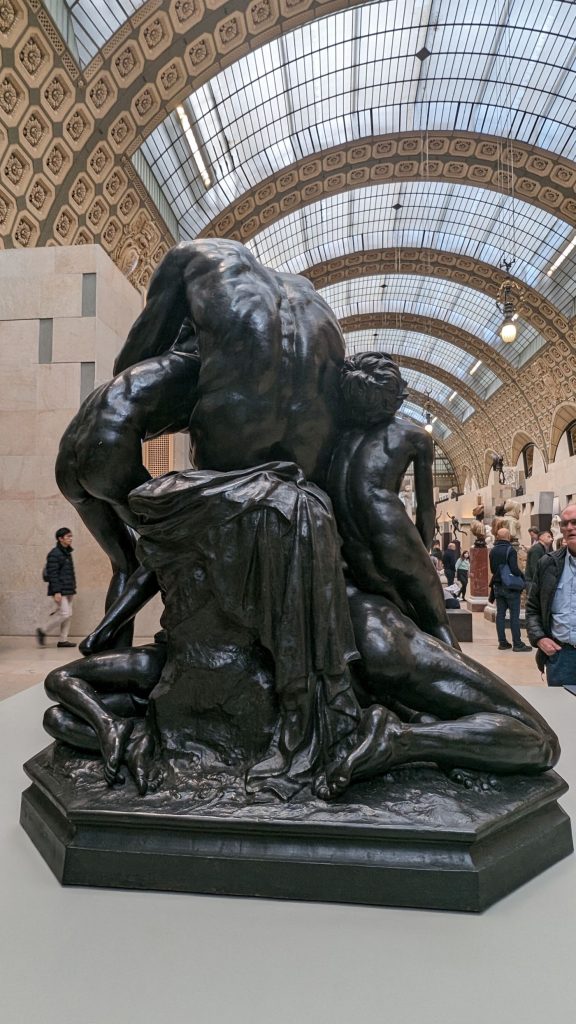
Jean-Baptiste Carpeaux was one of the most significant sculptors of the second half of the 19th century. A complete artist who imposed his own artistic expression, between exaltation of life, naturalism and baroque style, and whose genius is expressed through one of the most scandalous works in the history of sculpture in the 19th century: the Dance (pictured below).
In 1863, Charles Garnier, the architect of the new Paris Opera, asked four artists to produce four groups sculpted to decorate the building’s facade. To address the theme of the dance, he called his friend Jean-Baptiste Carpeaux, then aged 36 years.
The artist sketched and modeled multiple times for three years before designing this round of women who twirl around the genius of dance. A masterpiece expressed by the sensation of movement bacchantes, both natural and exuberant.
In 1869, La Danse was inaugurated on the facade of the monument. The public was shocked! How could he represent naked women so real having fun? Public opinion demanded the withdrawal of the work. Charles Garnier proposed moving it to the foyer of the ballet (room located at the back of the stage) but the Opera ballet opposed by signing a petition.
It was the war of 1870 and the death of the artist in 1875 that ended the controversy. The sculpture was moved to the Orsay Museum in 1986, where it is currently on view and is no longer shocking people, as far as we know.
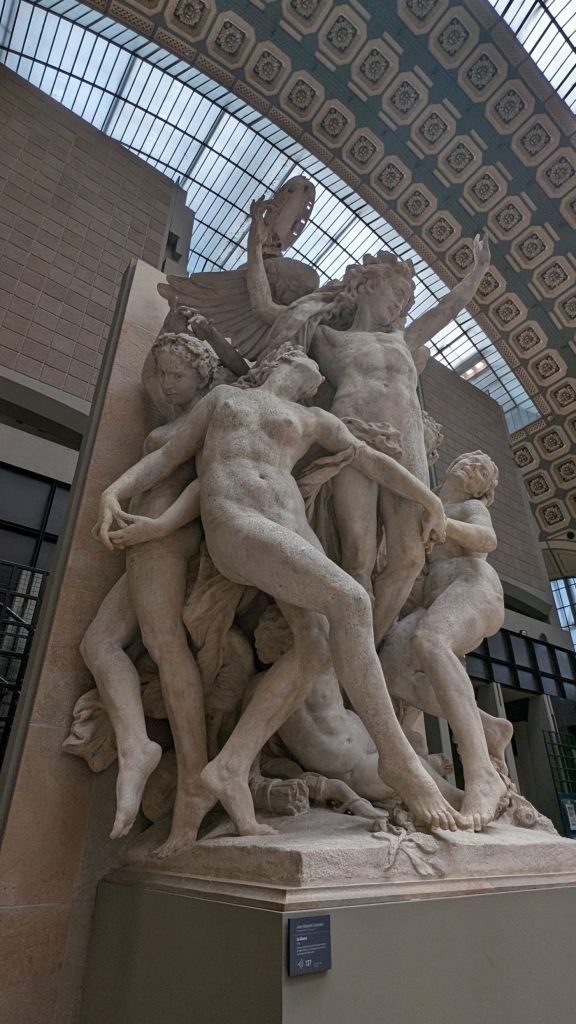
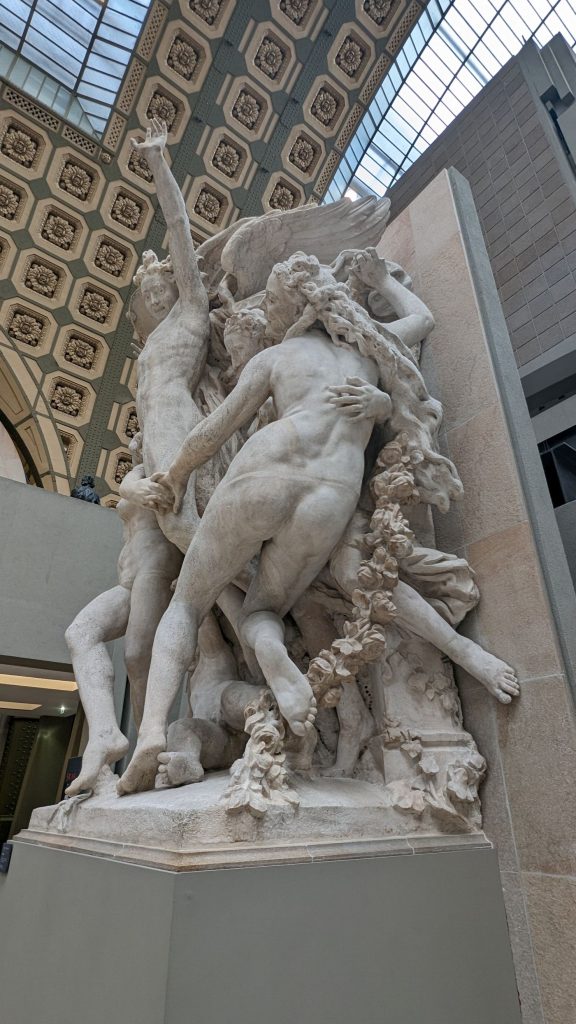
Auguste Rondin’s The Age of Bronze (L’âge d’airain) (pictured below) is a figure of a life-size nude male, 72 inches high. Rodin had a Belgian soldier pose for the statue. Rodin continued to produce casts of the statue for several decades after it was modeled in 1876.
When the statue was first exhibited at the 1877 Salon in Paris, France, Rodin was falsely accused of having made the statue by casting a living model, a charge that was vigorously denied. This charge benefited Rodin, though, because people were so eager to see this for themselves.
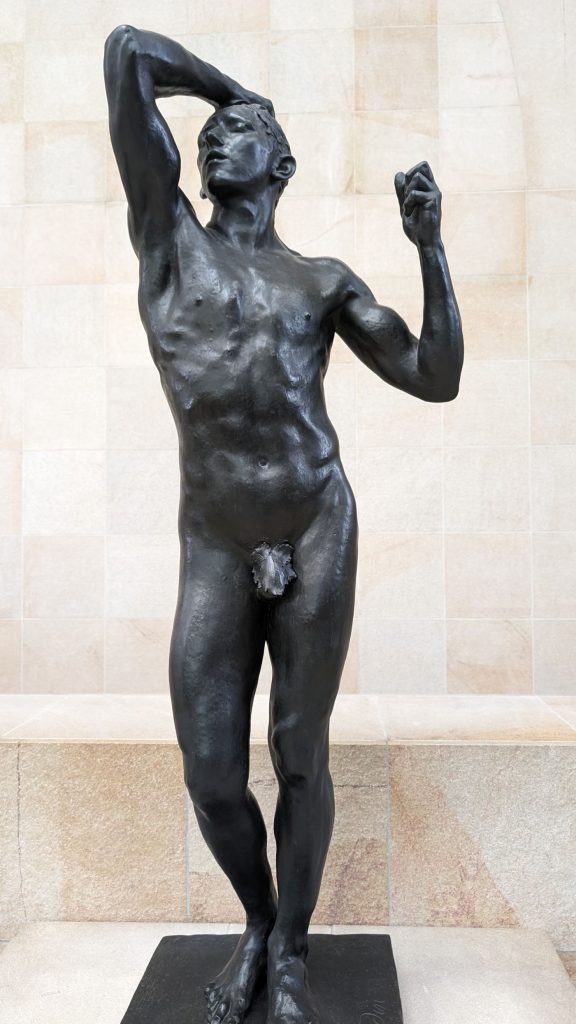
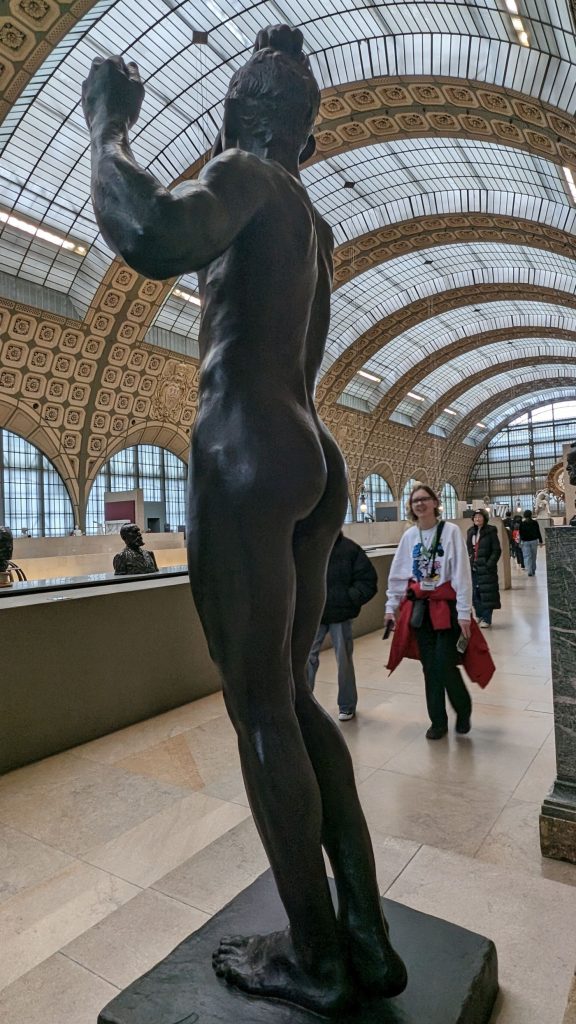
In a scene intended to evoke the races of Africa, the The Nubians or The Alligator Hunters (pictured below) represents a man planting an assegai in the mouth of an alligator ready to devour a young woman and her two infants and possibly another fainting woman.
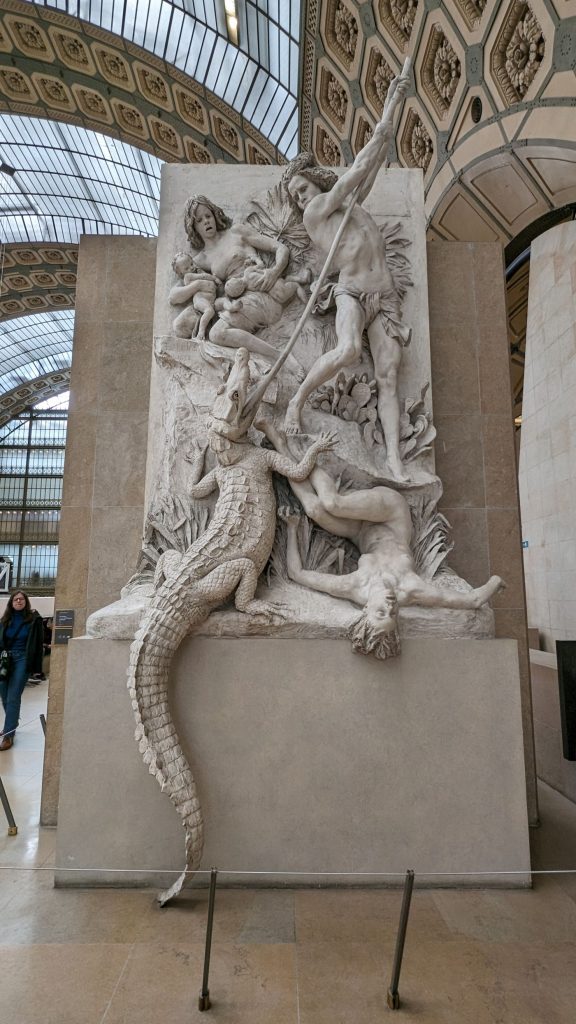
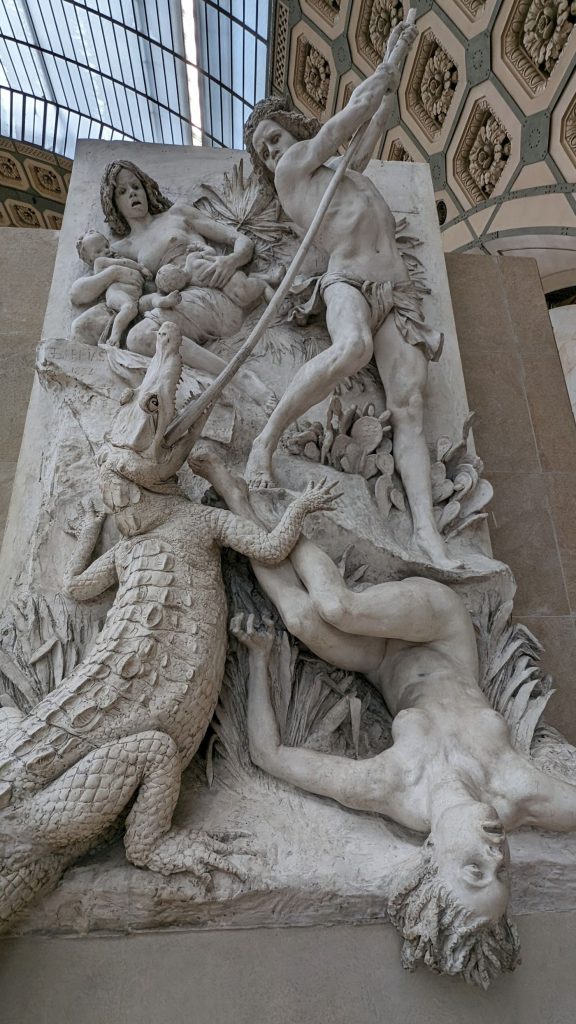
I am sharing these last two sculptures because they are so life-like and beautiful.
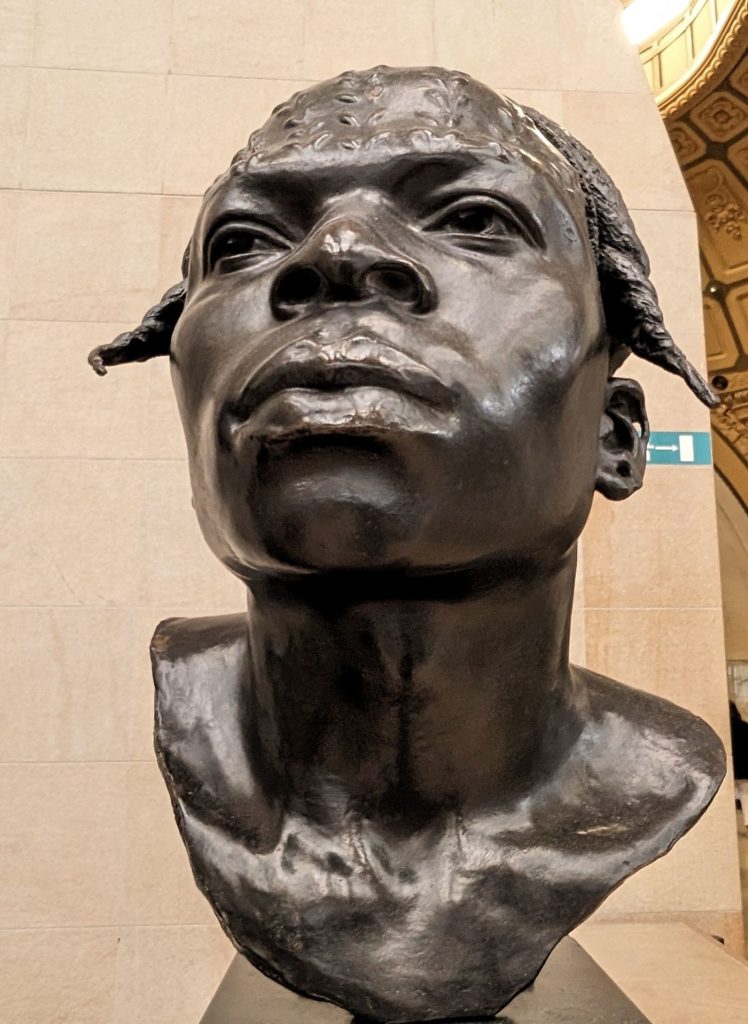
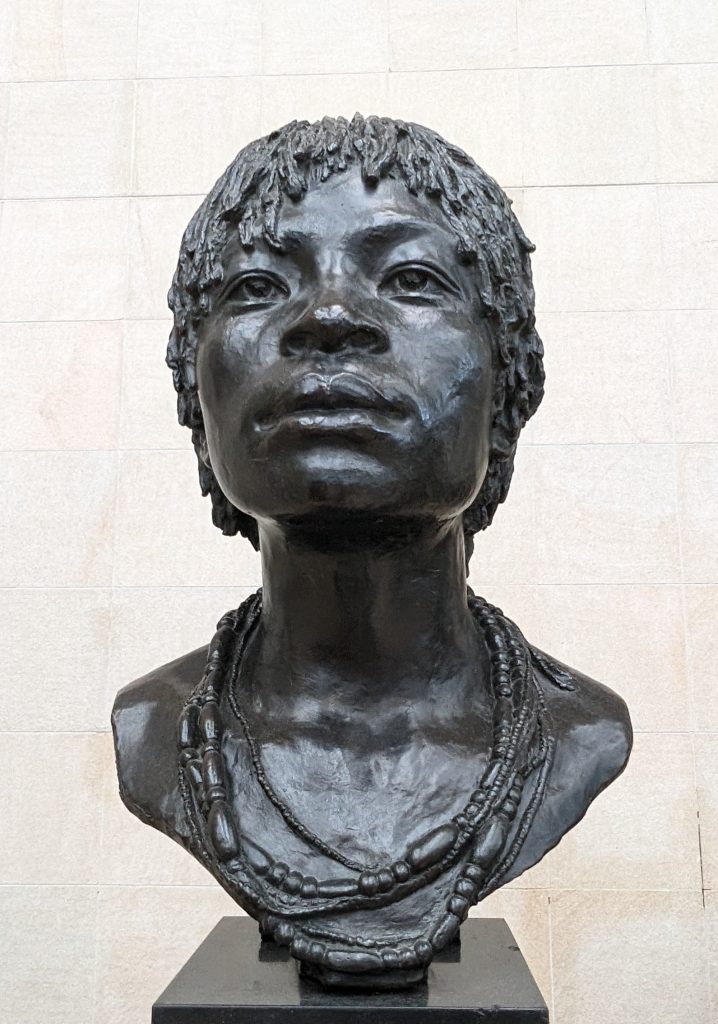
Here are a few pictures of Paris as viewed from our walk to Notre Dame.
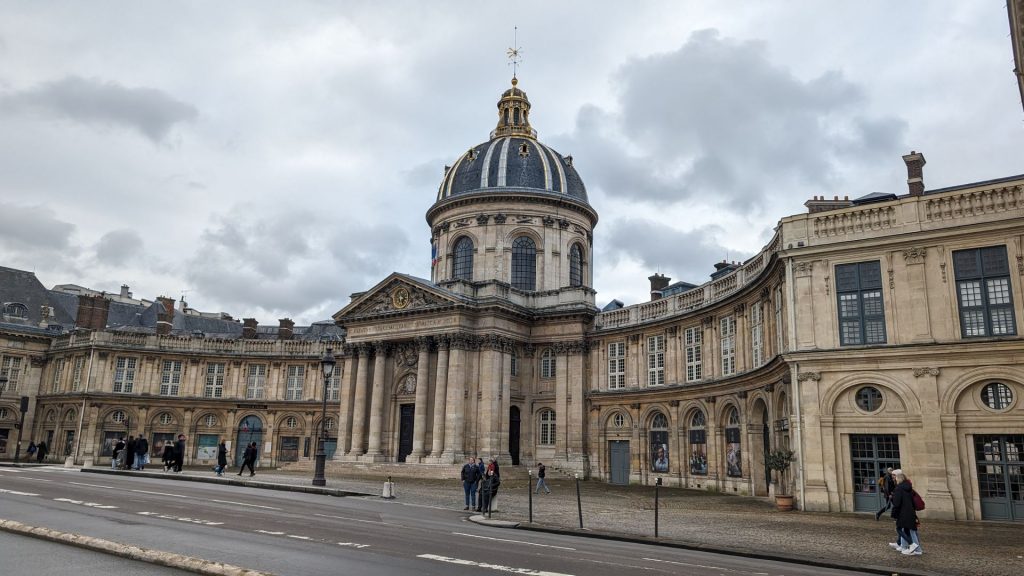
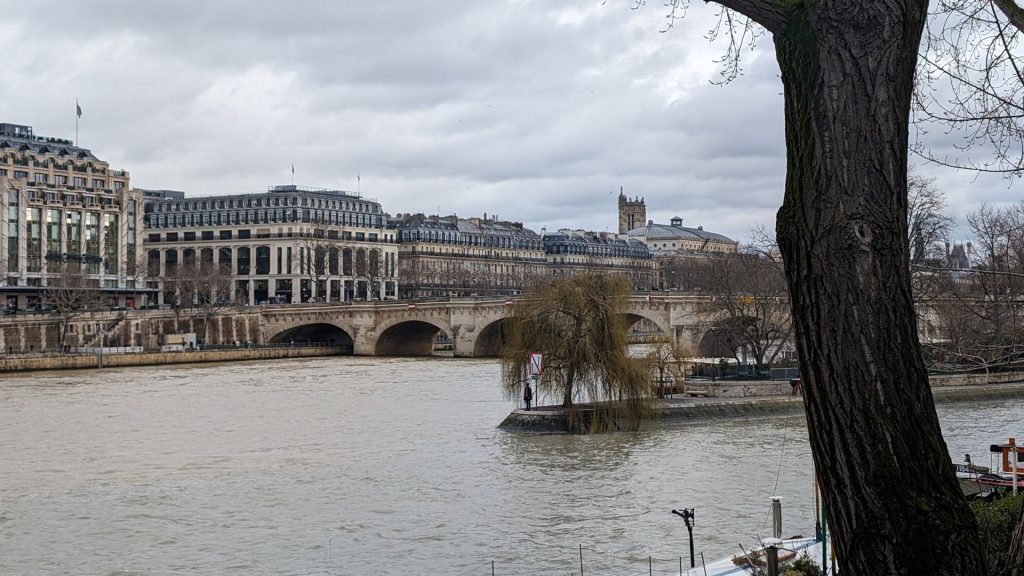
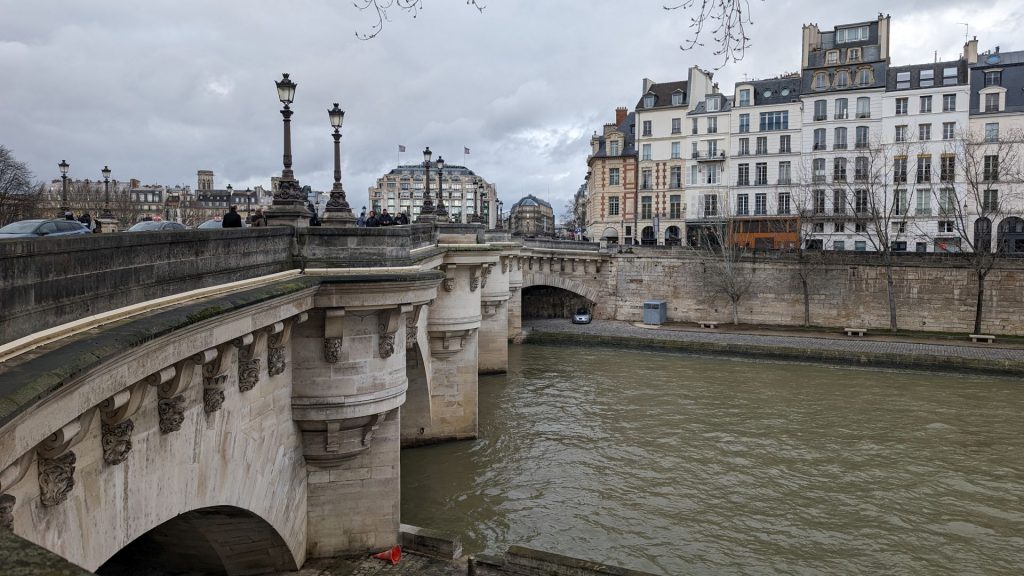
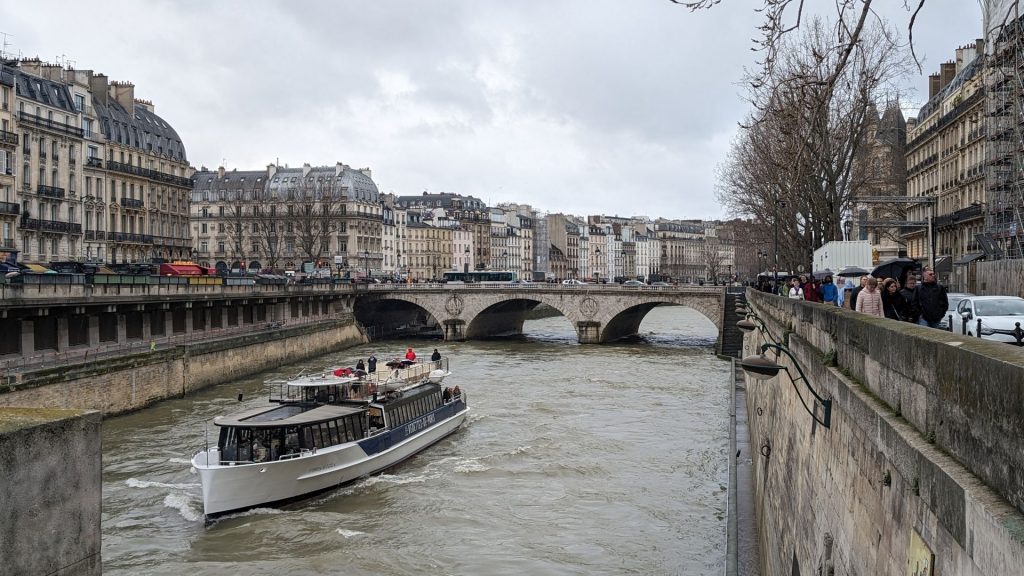
Notre Dame is still under construction due to fire damage, so we just took a quick picture and went to Sainte Chapelle.
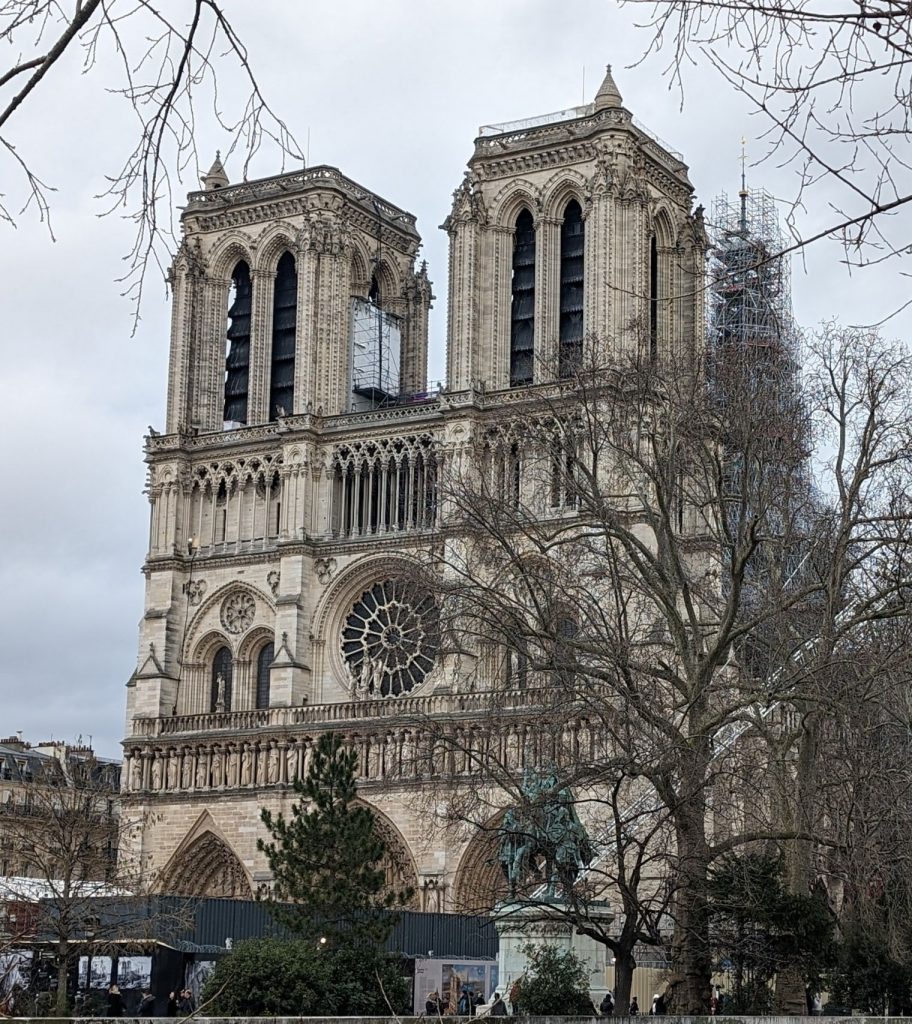
Sainte-Chapelle was built in the middle of the 13th century by Louis IX, the future Saint Louis, to house the most prestigious relics of the Passion of Christ: the Crown of Thorns and the fragment of the True Cross.
Completed in less than seven years, a record time, the Sainte-Chapelle is designed like a piece of goldwork, whose walls of light exalt the Capetian monarchy and the kingdom of France.
In medieval times, Christian fervor placed a very high value on relics, the possession of which conferred considerable prestige. In 1239, after two years of negotiations, Louis IX bought the crown of thorns from Beaudouin Il de Courtenay, Latin emperor of Byzantium. Other relics (22 in total, including a fragment of the Cross) were acquired in 1241, Louis IX then decided to build a monument worthy of this treasure.
Through this extraordinary acquisition, 135,000 tournament pounds, or half of the kingdom’s annual income, Saint Louis expressed his piety, but also increased the prestige of France. Paris became, in the eyes of medieval Europe, a “new Jerusalem,” and thereby the beacon of Western Christianity.
The robust and powerful architecture of the lower chapel serves as a support for the upper chapel and its immense stained glass windows. Thus freed from stone, the walls seem to have disappeared in favor of immense glass roofs whose elegance has always commanded admiration.
Damaged by fires in 1630 and 1776, then during the Revolution, the building served as a flour warehouse, then was transformed into an archives repository from 1803 to 1838 for the needs of the courthouse. The windows are then bricked up, and the stained glass windows are either destroyed or dismantled and part of it is then dispersed on the art market, particularly in England.
Thanks to the pressure of public opinion and great defenders such as Victor Hugo, the Sainte-Chapelle was saved from destruction. It was the subject of a vast exemplary restoration project between 1840 and 1863, carried out successively by the architects Duban, Lassus and Boeswillwald; who endeavored to restore its 13th century appearance. This model site served as a laboratory for the restoration and conservation of historic monuments.
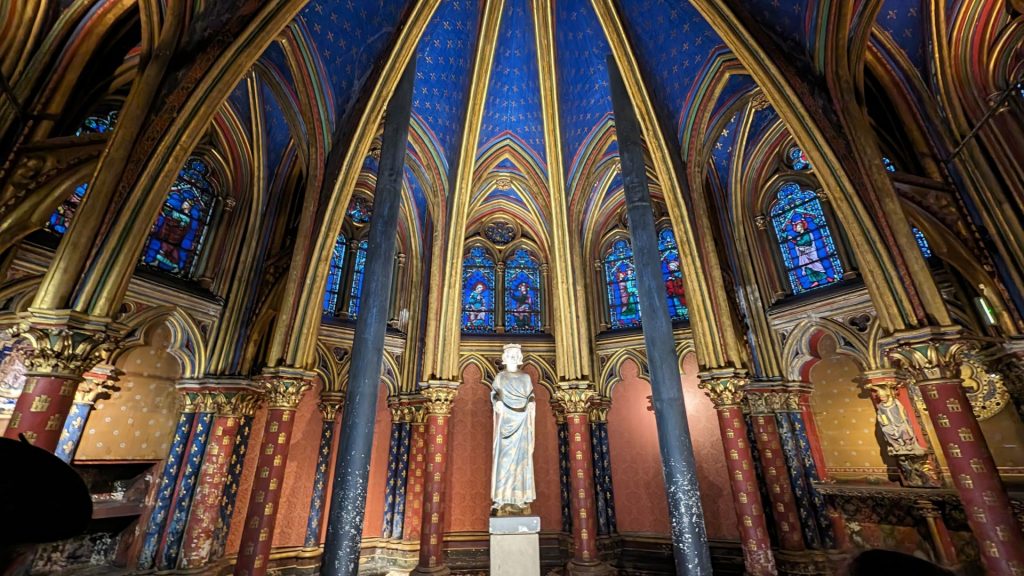
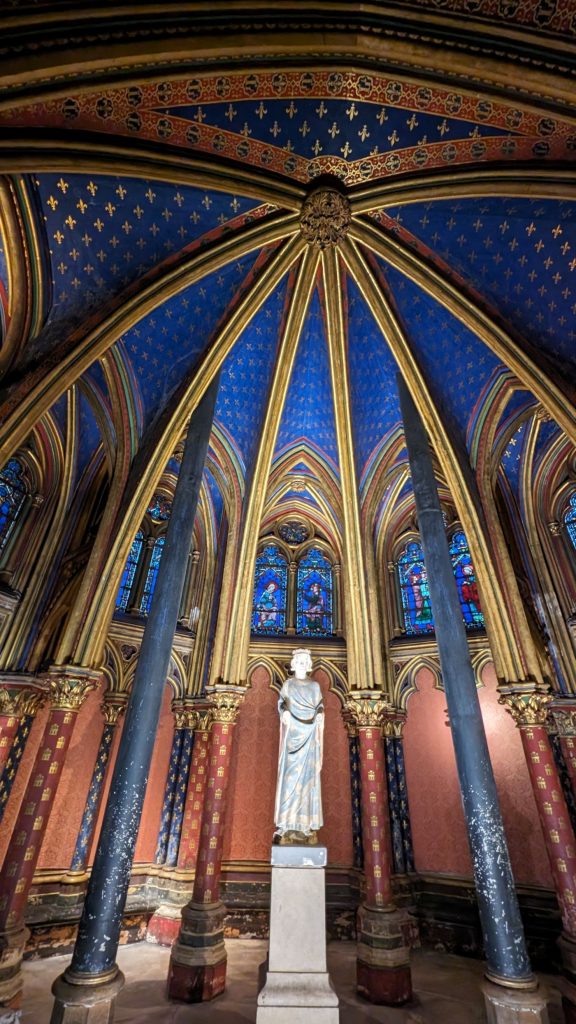
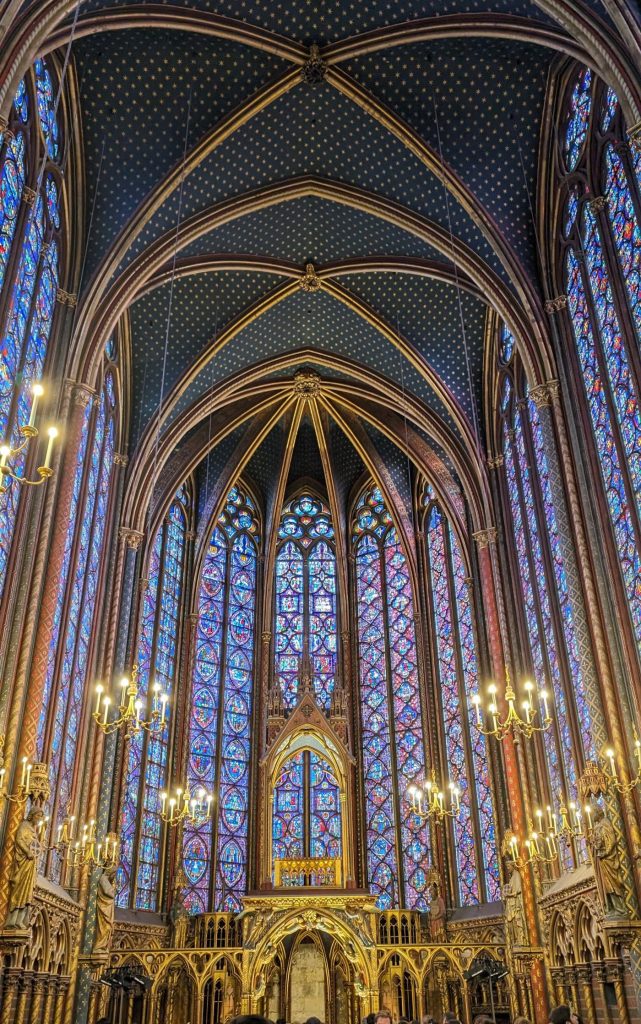
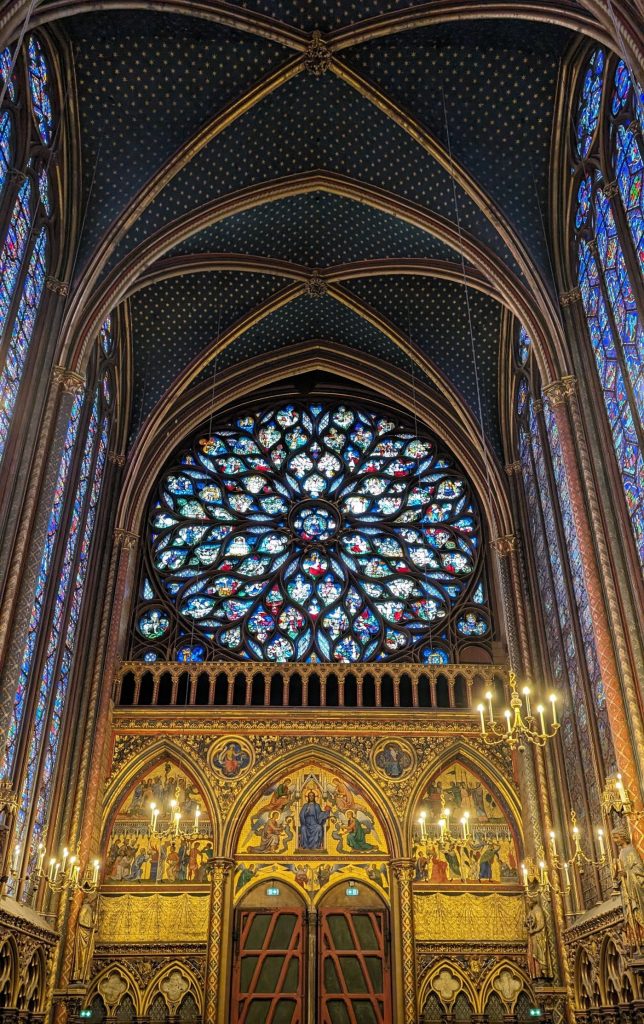
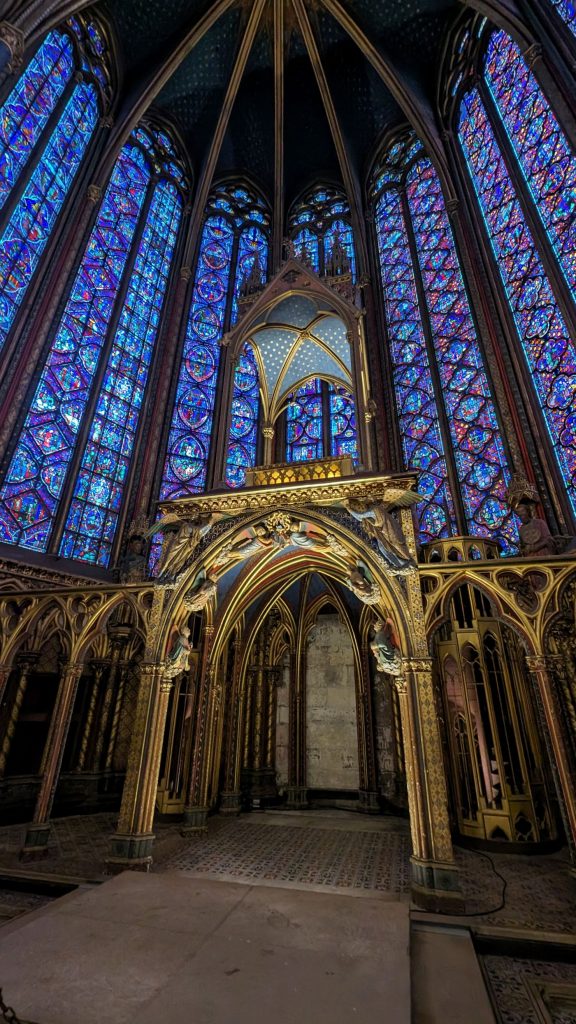
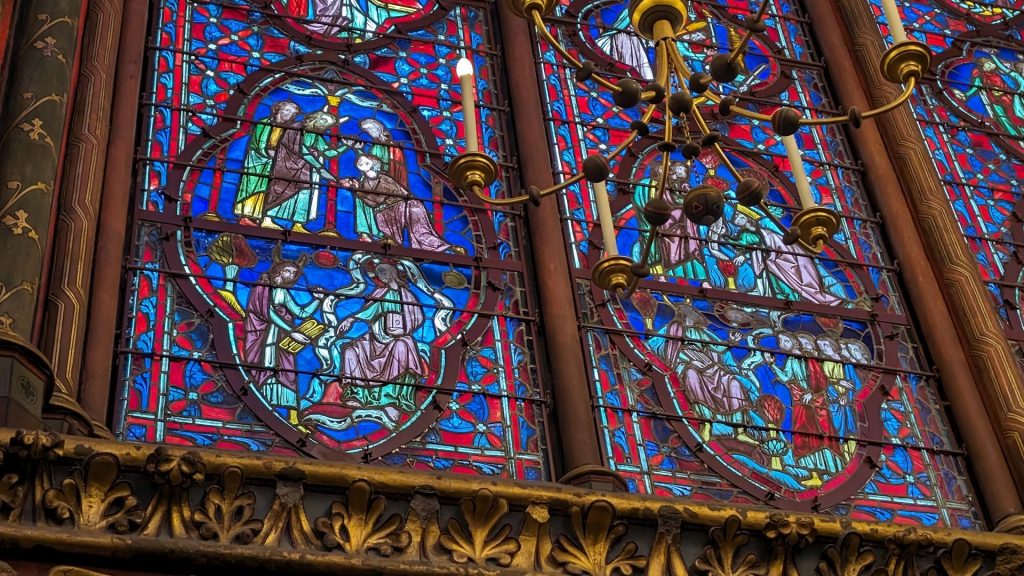
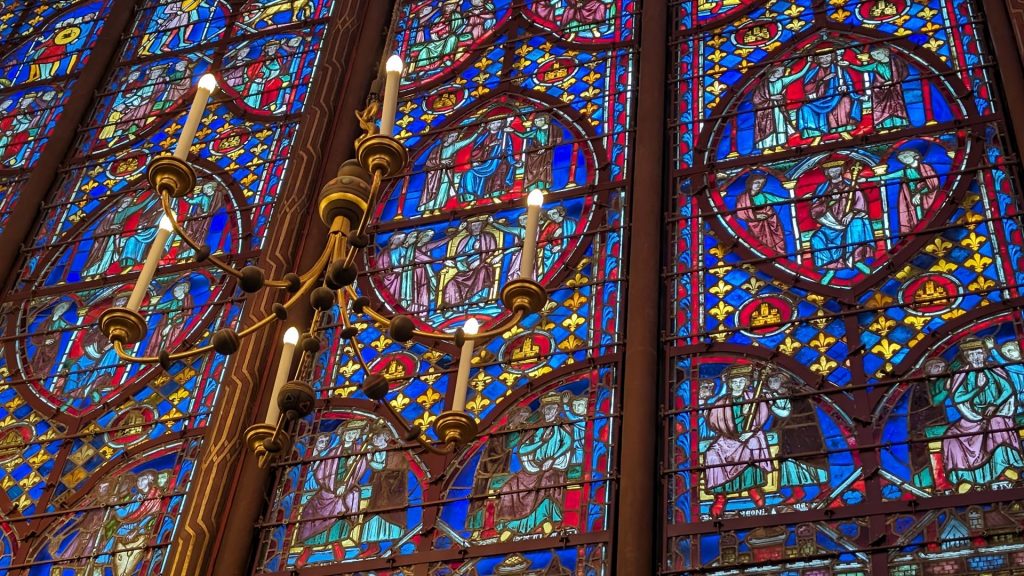
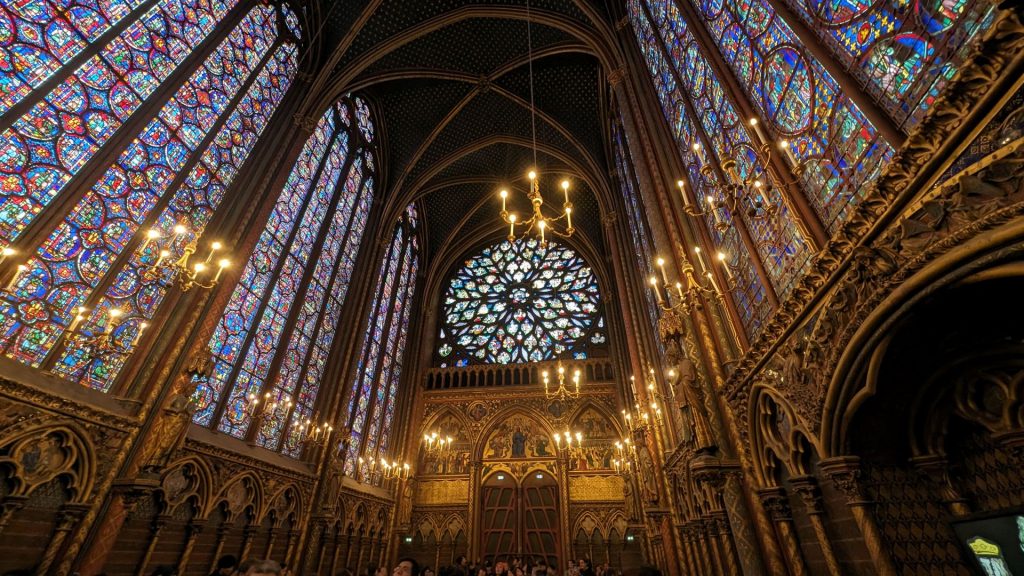
Listed as a World Heritage Site by UNESCO, the Conciergerie is one of the oldest vestiges of the Palais de la Cité, residence and seat of power of the kings of France in the Middle Ages. Transformed into a prison of the Parliament of Paris towards the end of the 14th century, the Conciergerie remained a major place of detention during the French Revolution with the installation of the Revolutionary Tribunal. Its most famous prisoner is Marie Antoinette.
There isn’t much to see, except for the beautiful pictures displayed in it. Here are a few pictures from our visit.
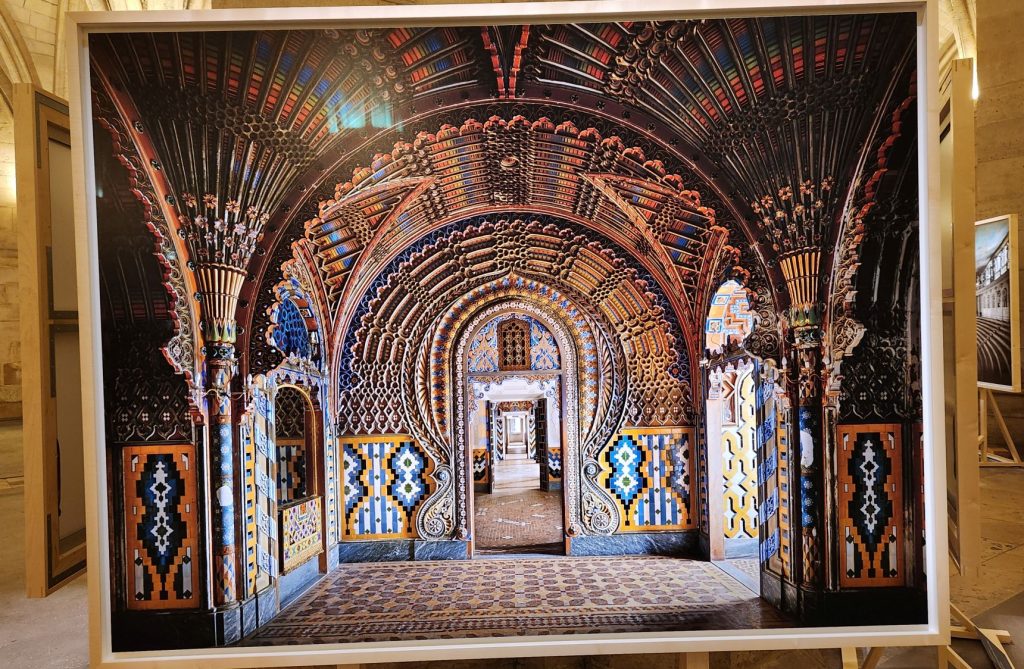
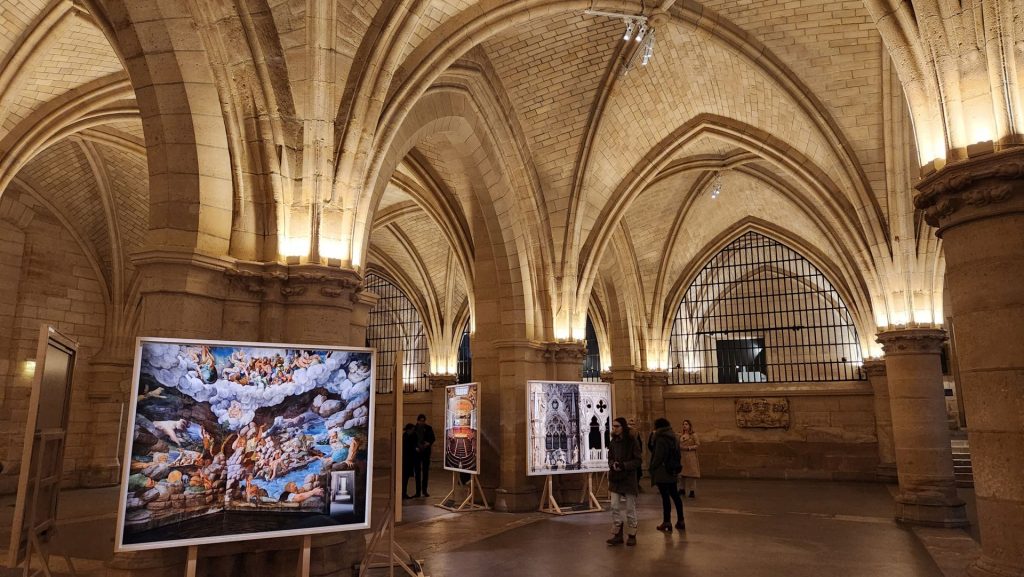
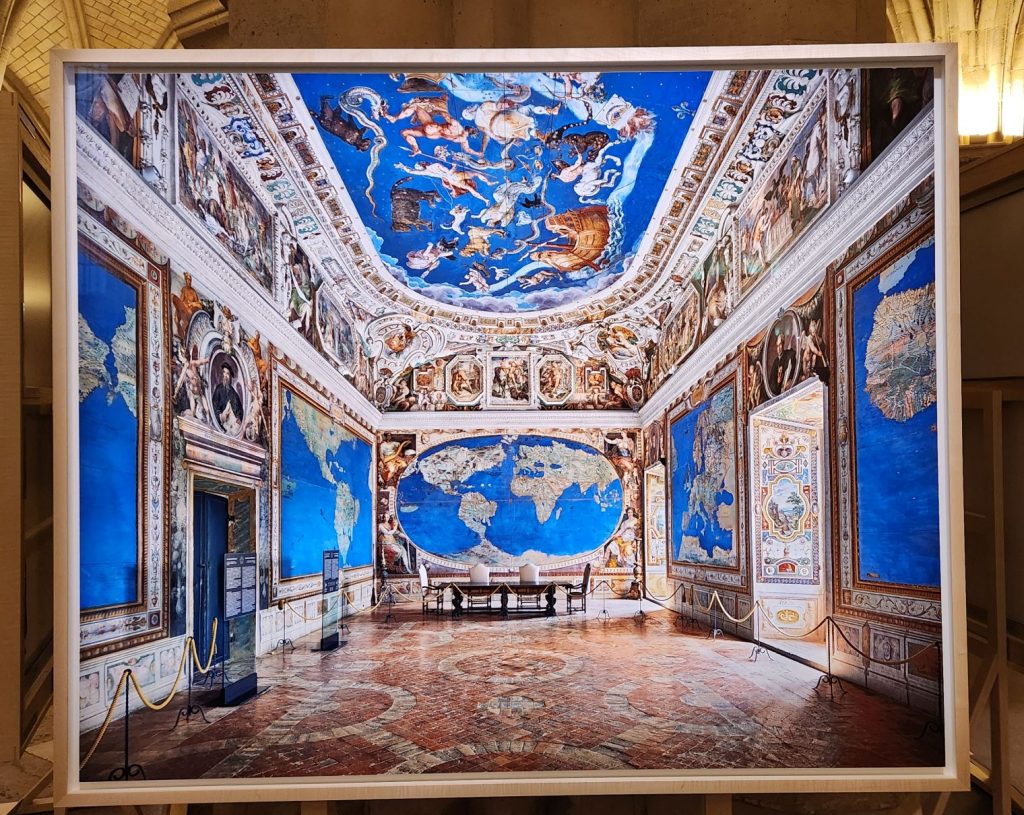
Our final visit of the day was to the Catacombs. The history of the Paris Catacombs starts in the late 18th century, when major public health problems tied to the city’s cemeteries led to a decision to transfer their contents to an underground site.
Paris authorities chose an easily accessible site that was, at the time, located outside the capital: the former Tombe-Issoire quarries under the plain of Montrouge. In operation since at least the fifteenth century and then abandoned, these quarries were a small part of the labyrinth that extended under the city over approximately 800 hectares.
The first evacuations were made from 1785 to 1787 and concerned the largest cemetery in Paris, the Saints-Innocents cemetery, which had been closed in 1780 after consecutive use for nearly ten centuries. The tombs, common graves and charnel house were emptied of their bones, which were transported at night to avoid hostile reactions from the Parisian population and the Church. The bones were dumped into two quarry wells and then distributed and piled into the galleries by the quarry workers. Transfers continued after the French Revolution until 1814, with the suppression of parochial cemeteries, such as Saint-Eustache, Saint-Nicolas-des-Champs and the Bernardins Convent, in the center of Paris. They were begun again in 1840, during urban renovation by Louis-Philippe and the Haussmannian reconfiguration of the city from 1859 to 1860. The site was consecrated as the “Paris Municipal Ossuary” on April 7, 1786, and, from that time forward, took on the mythical name of “Catacombs”, in reference to the Roman catacombs, which had fascinated the public since their discovery. Starting in 1809, the Catacombs were opened to the public by appointment.
It was a somber experience. I was surprised to see how the bones were arranged.
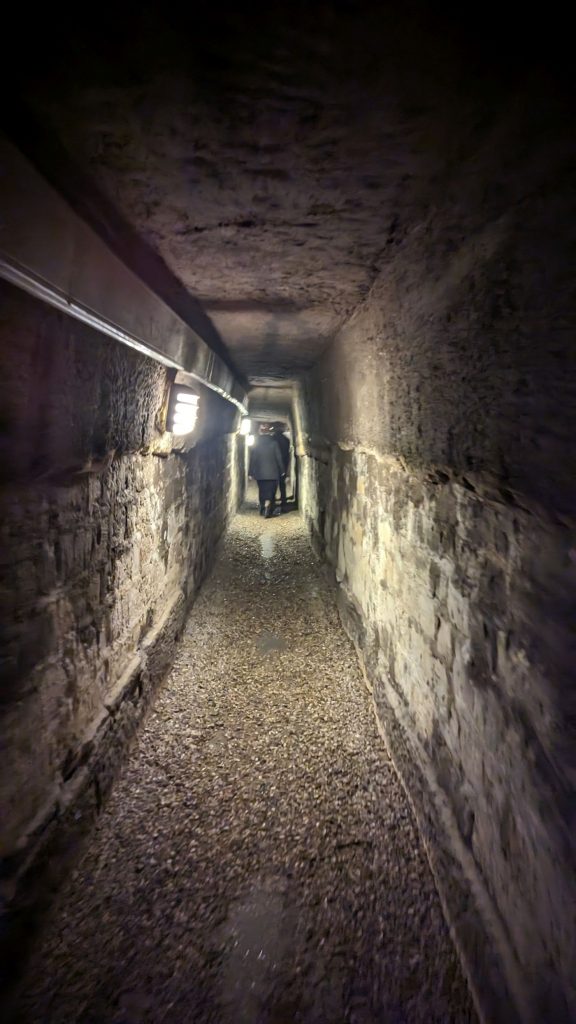
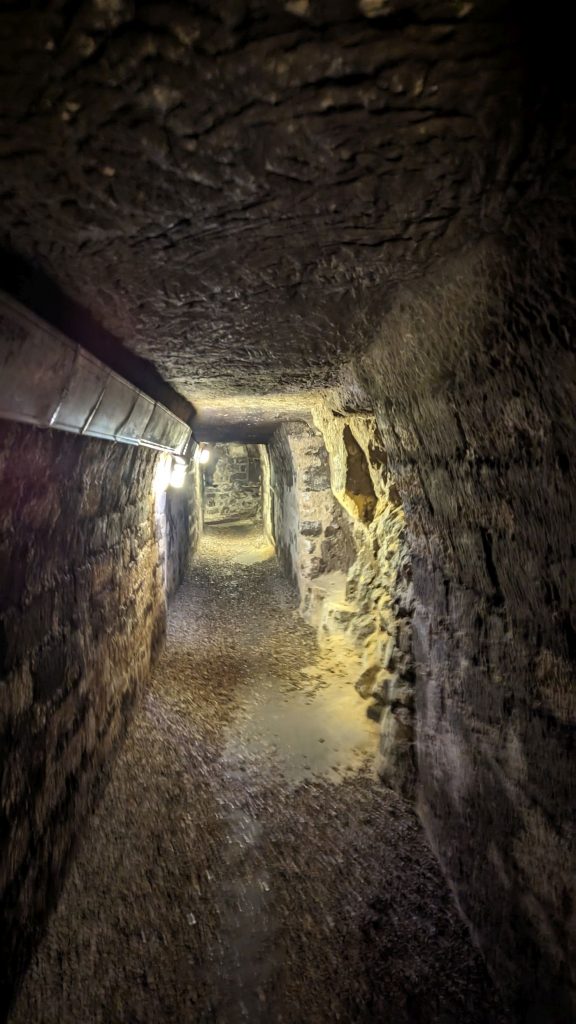
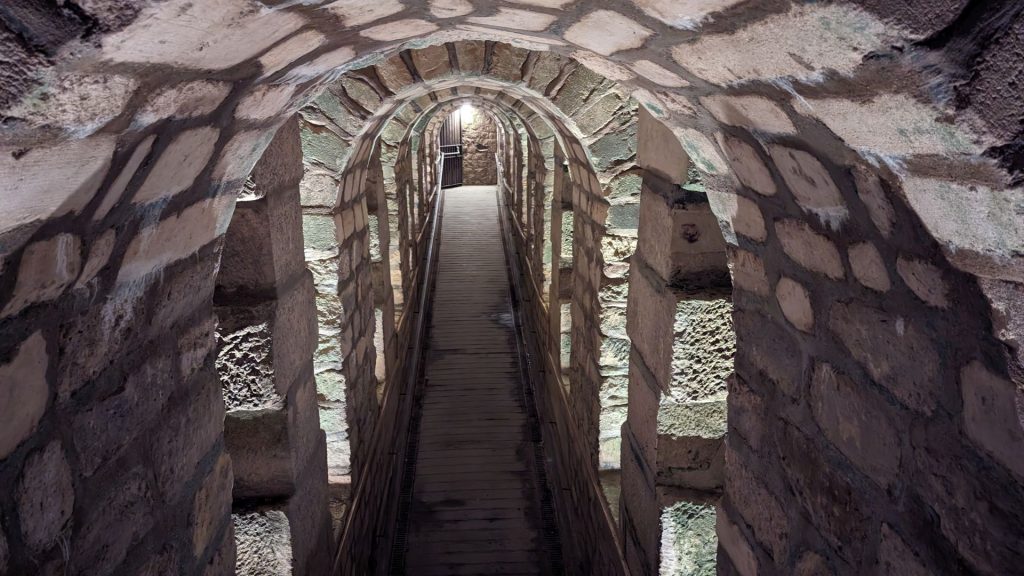
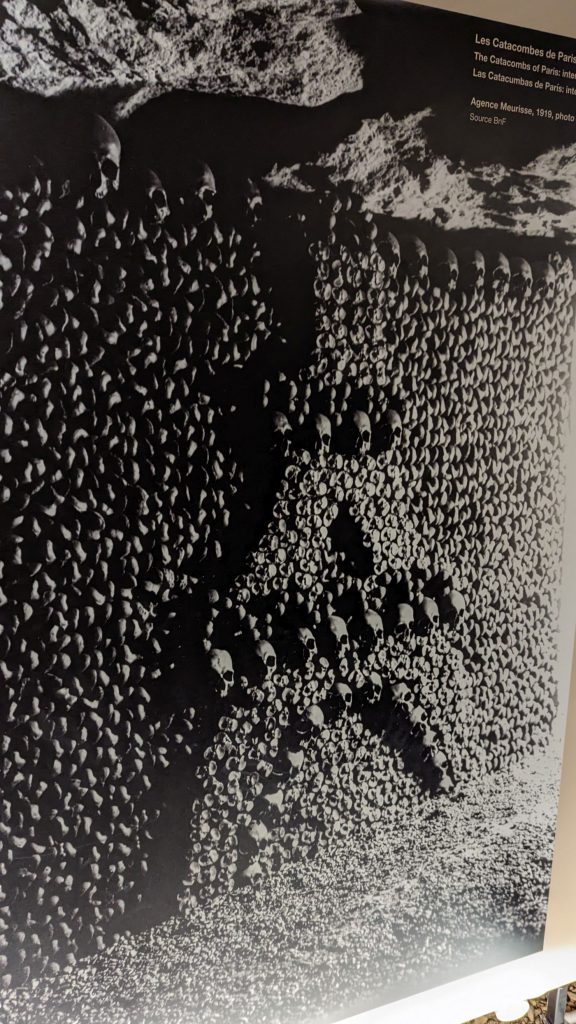
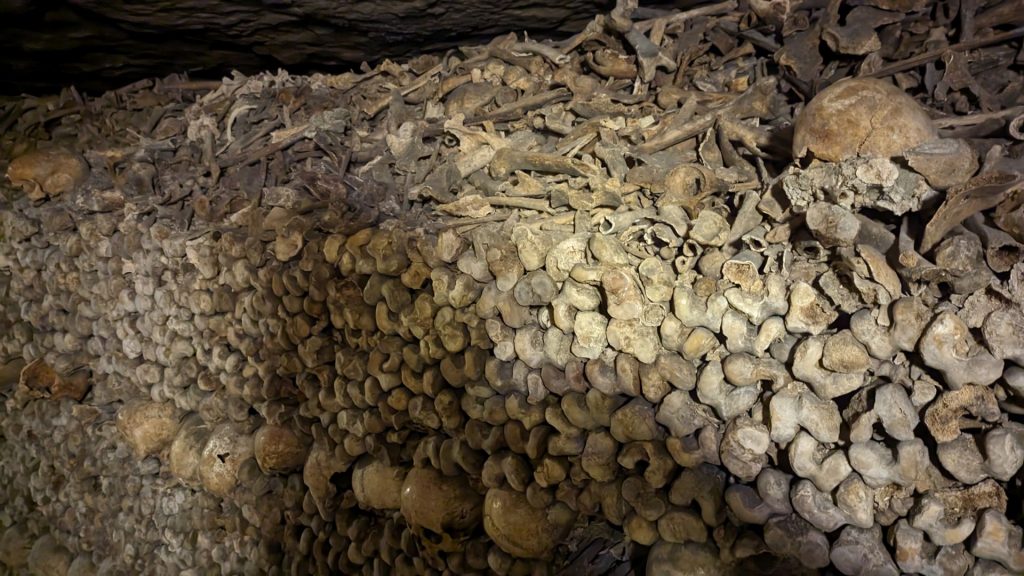
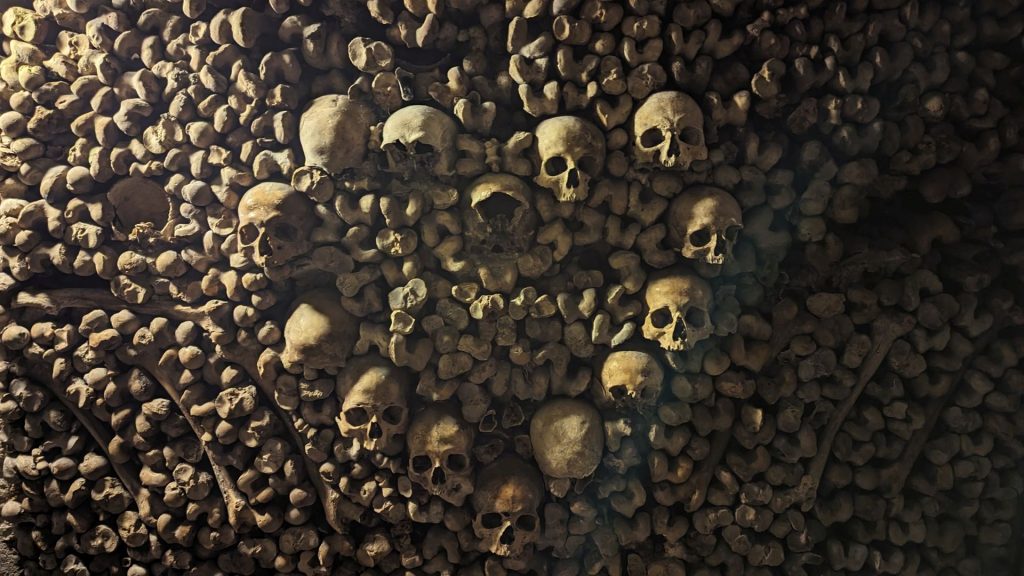
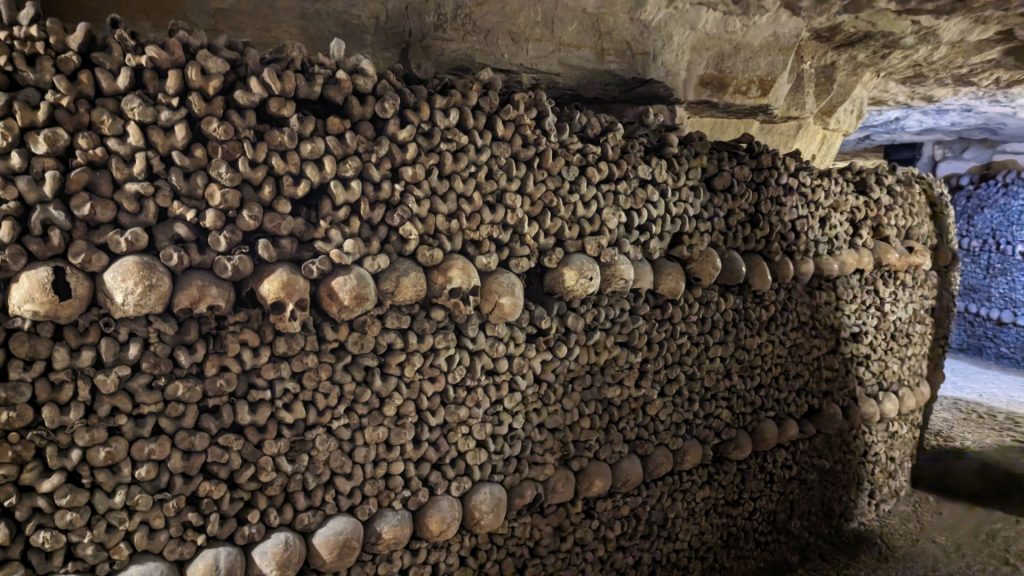
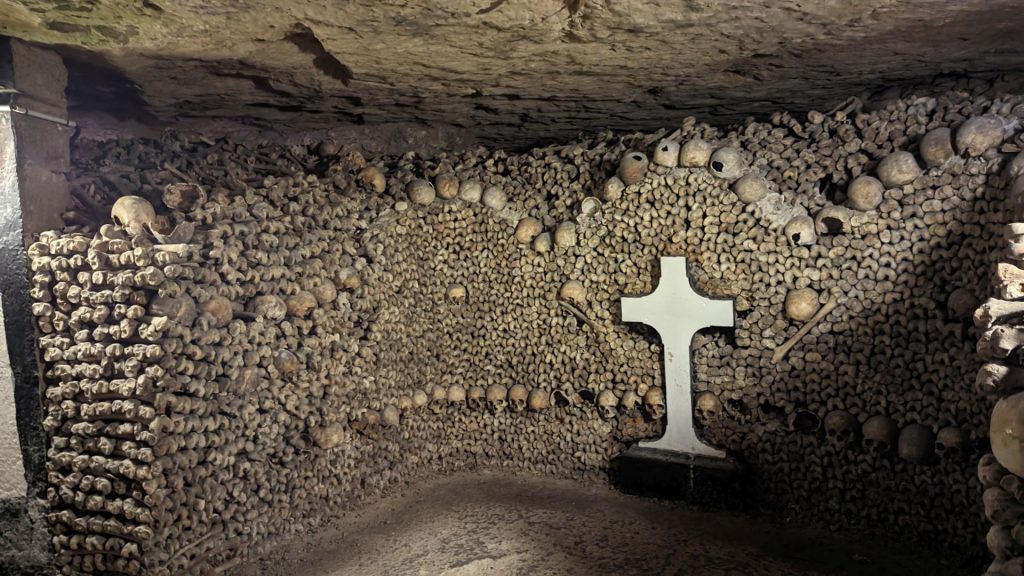
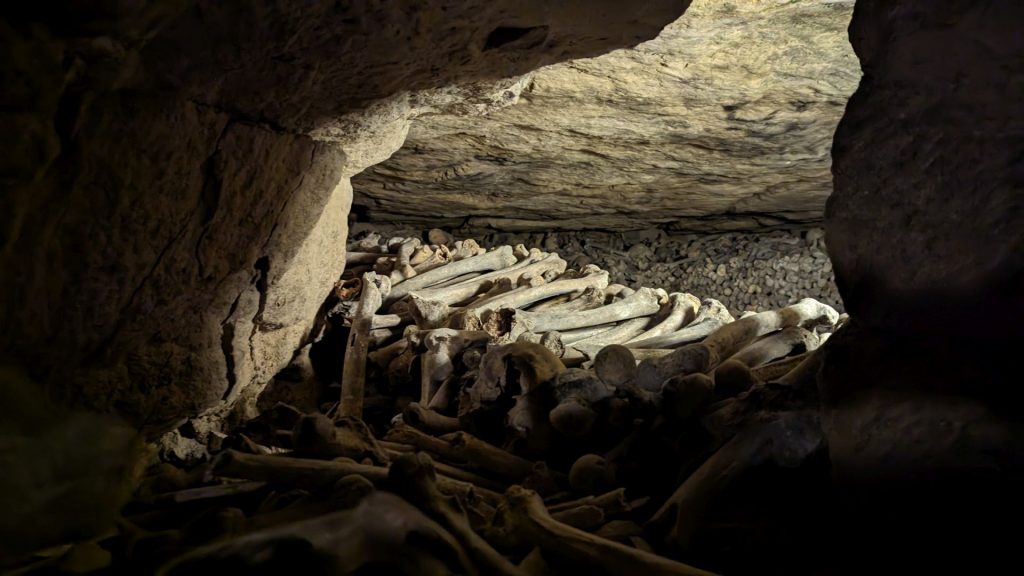
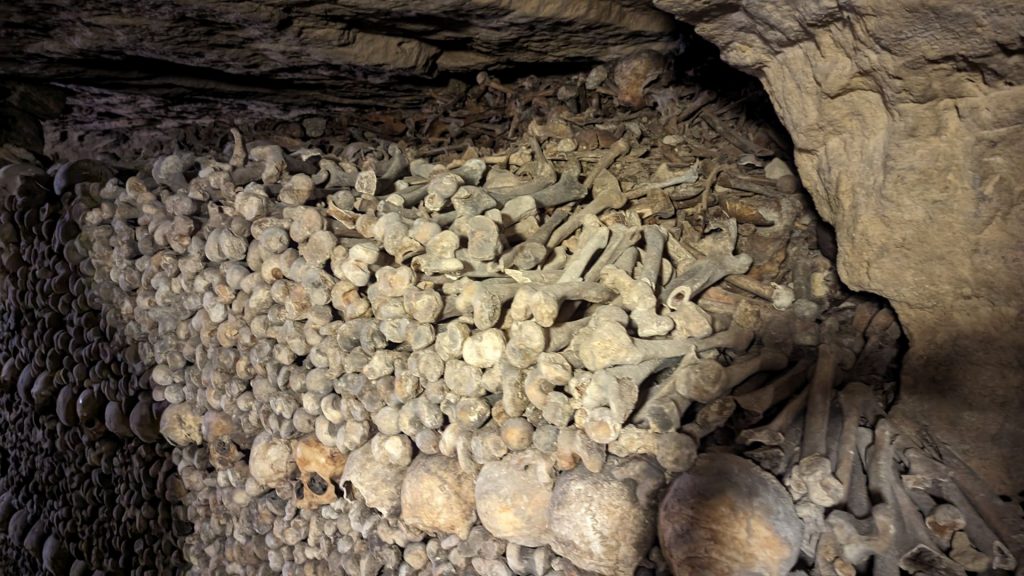
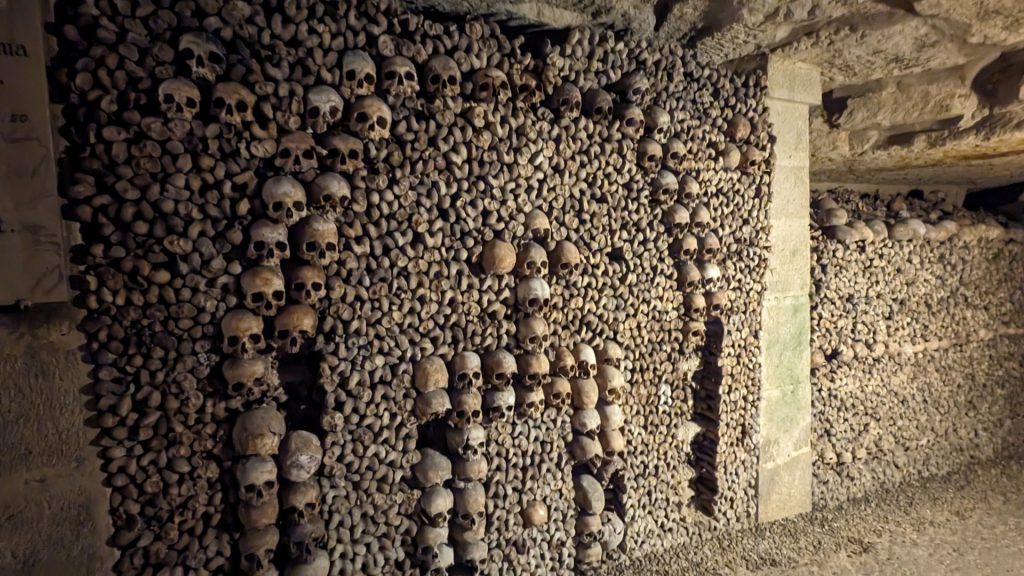
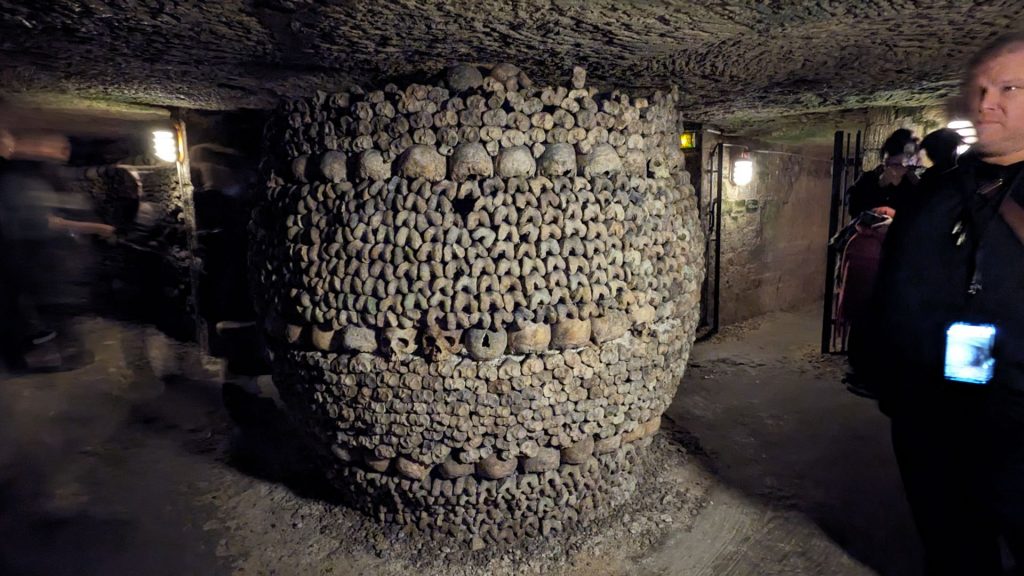
Our second day consisted of visits to Montmartre, Sacré Cœur, the Arc de Triomphe, and the Eiffel Tower. We’d visited all of these in 2003 but we wanted to see them again.
We started the day at Sacré Cœur. Then I had some hot wine. Just cuz.
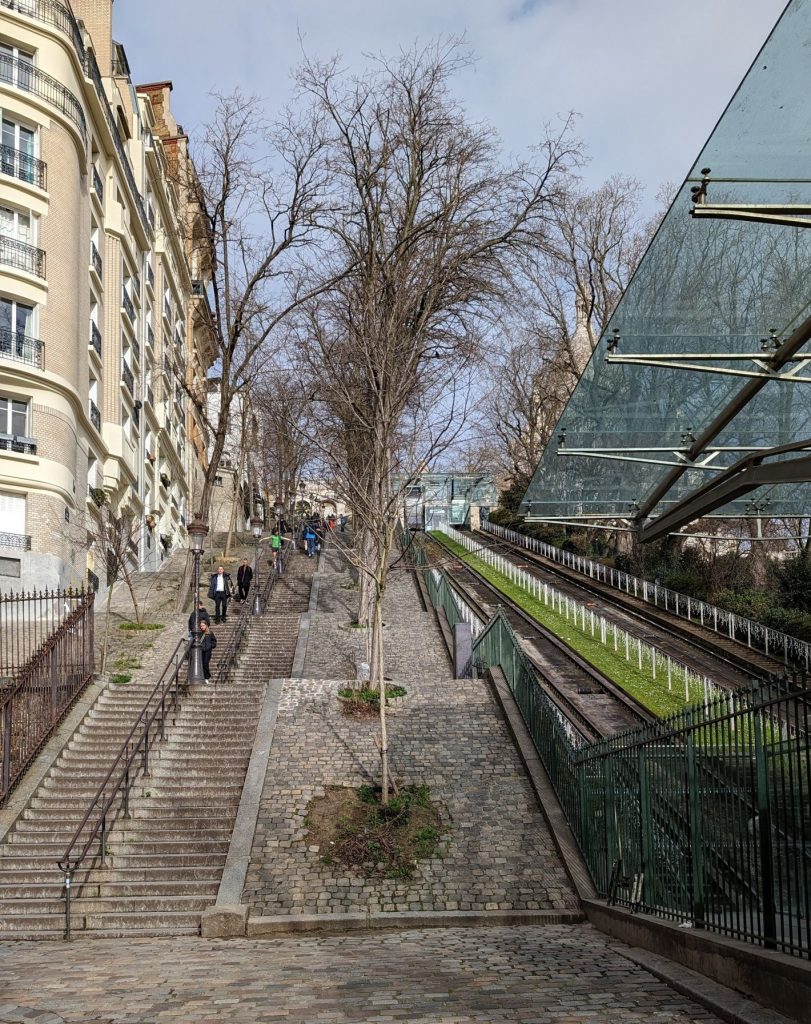
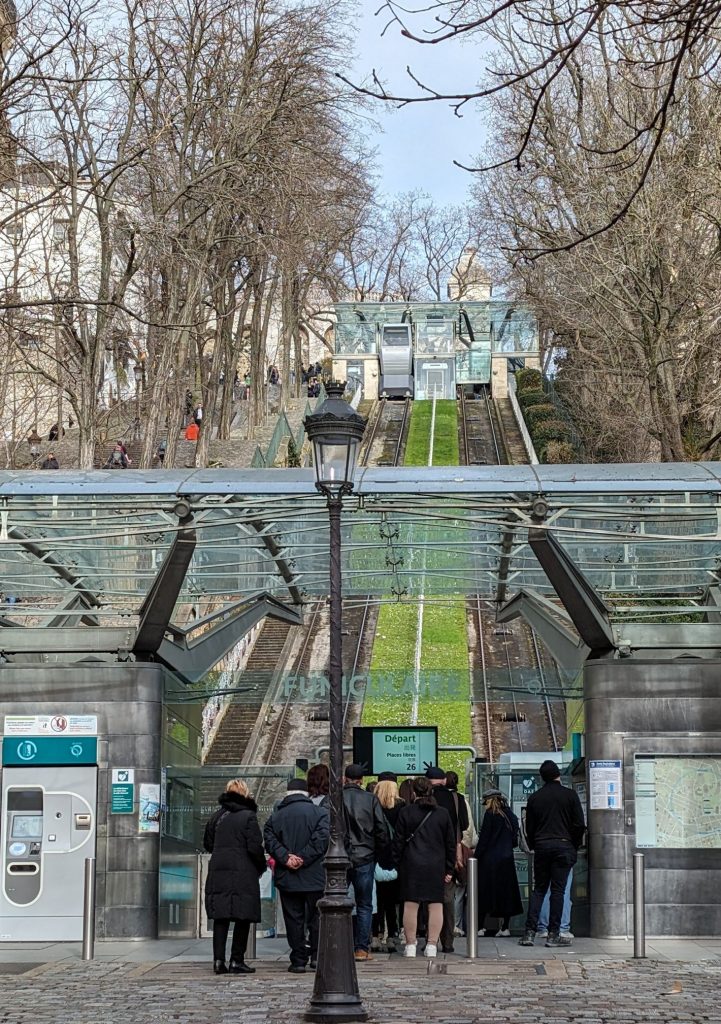
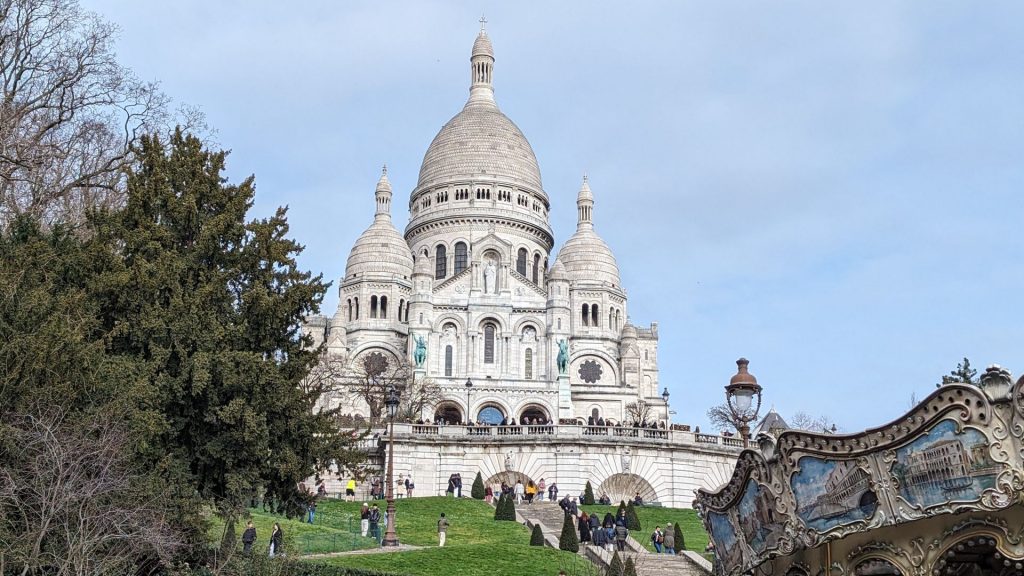
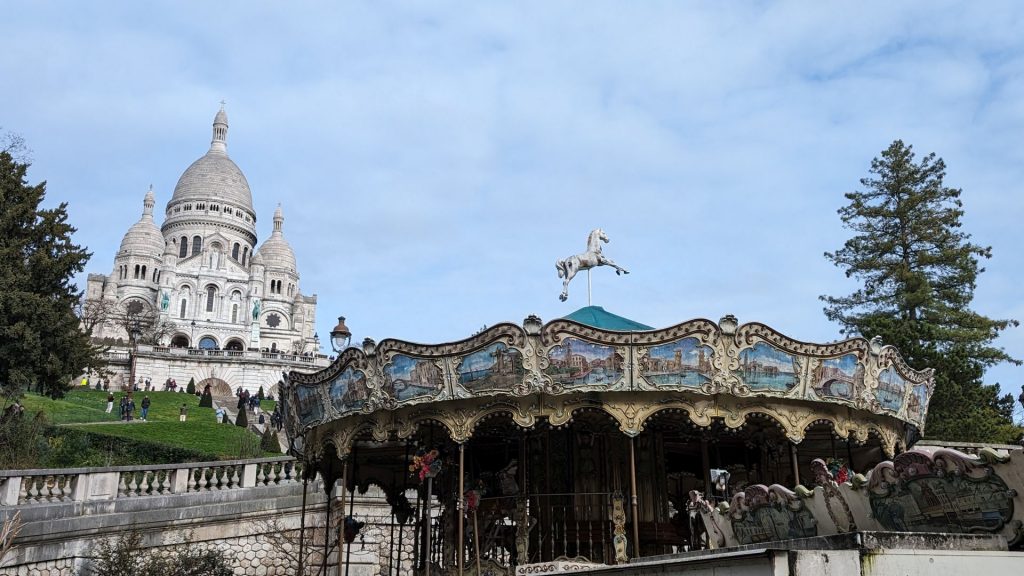
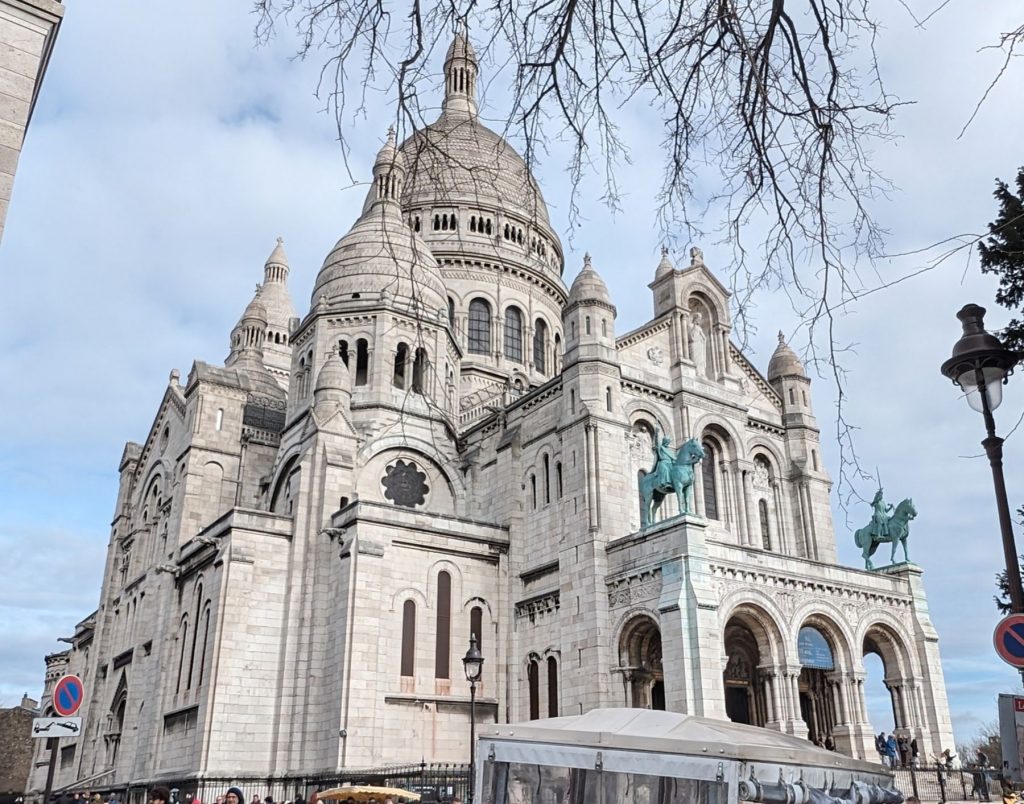
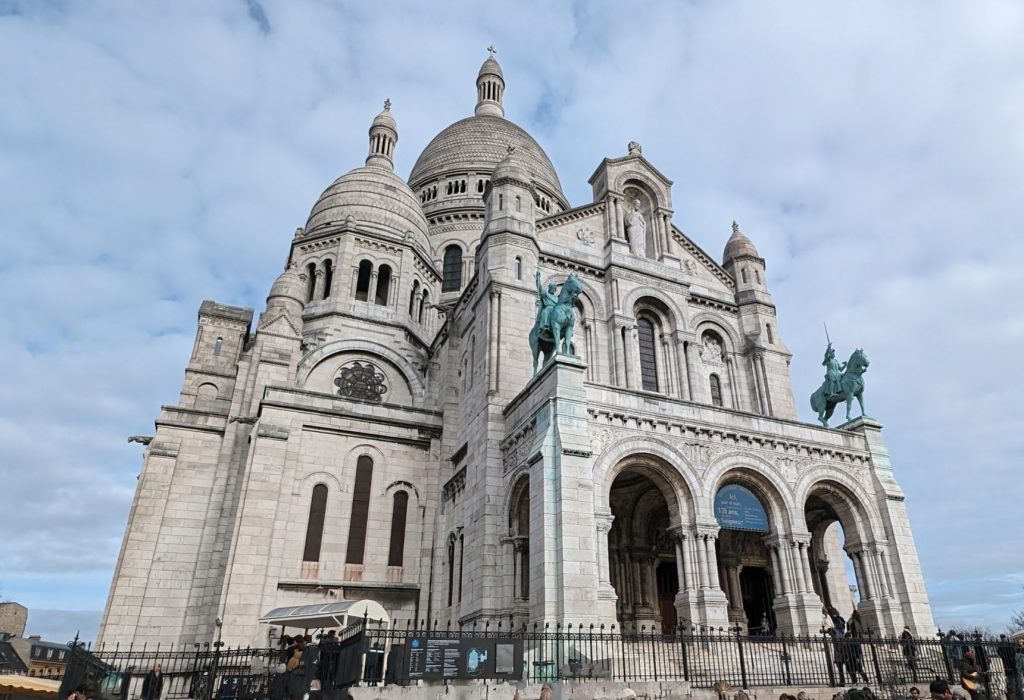
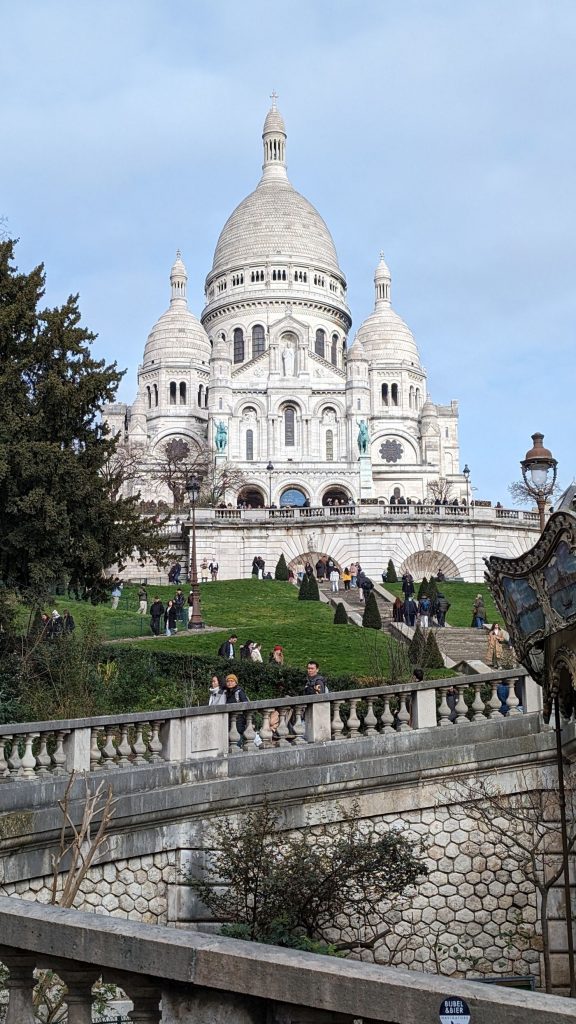
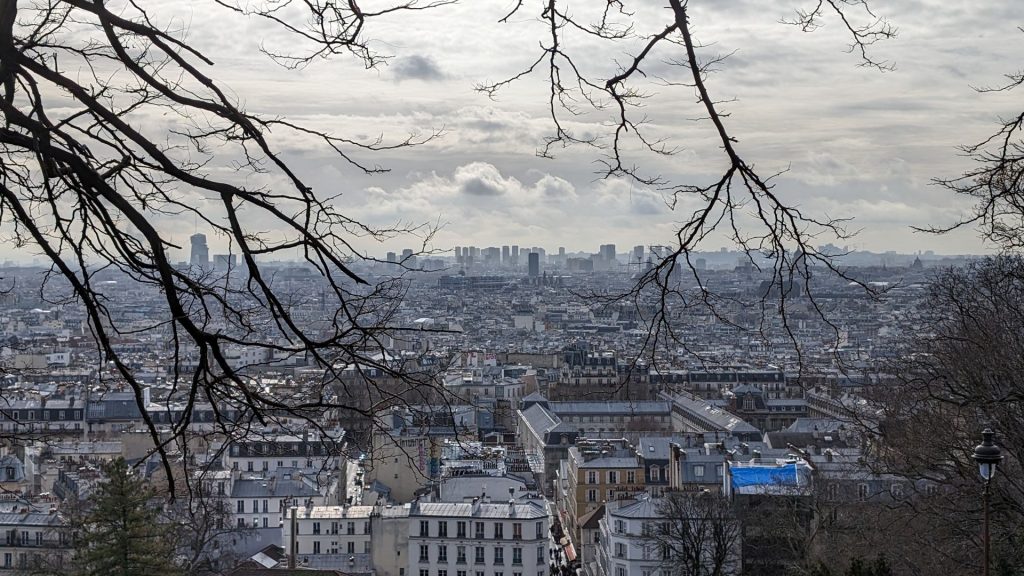
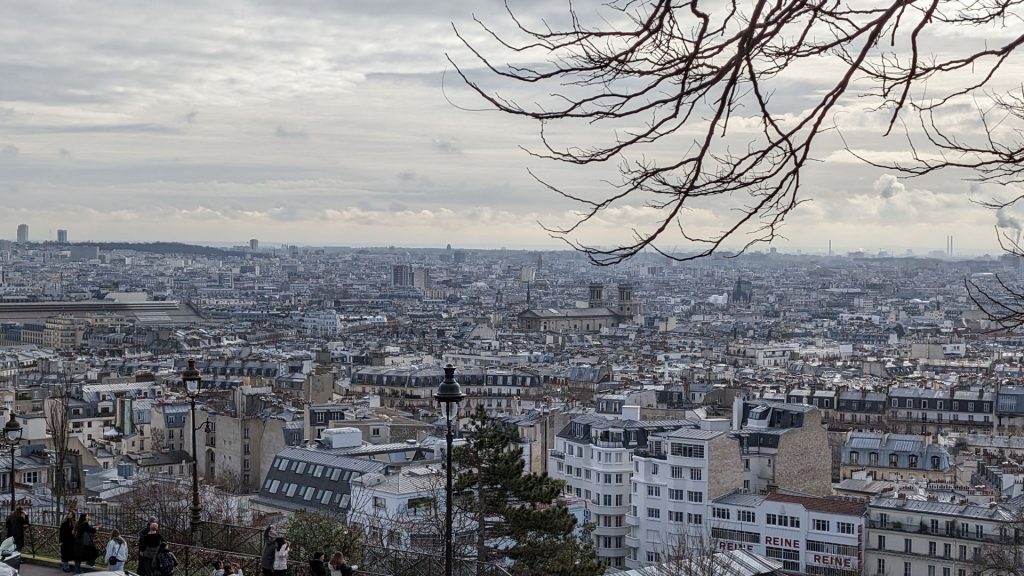
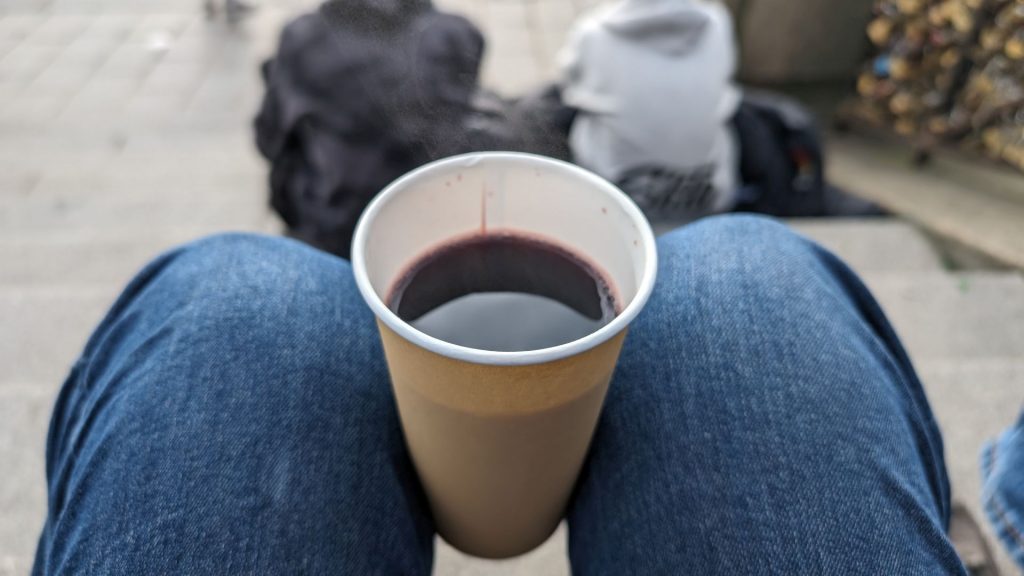

Our next stop was the Arc de Triomphe. We’d seen this from the street in 2003 but we had rooftop tickets today. The view from the top was lovely.
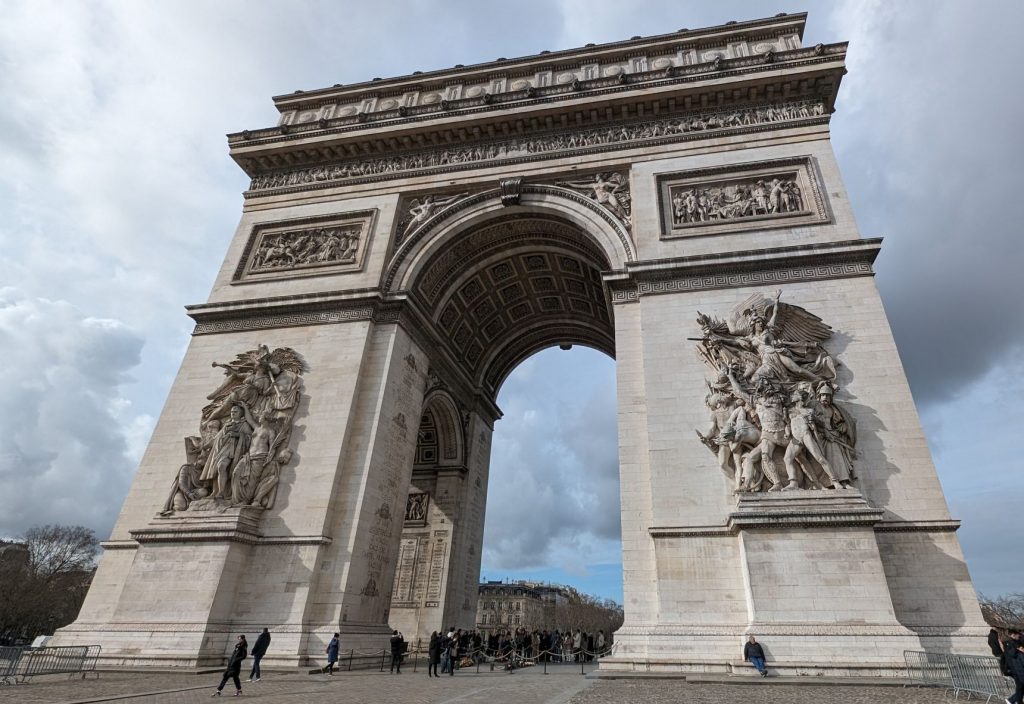
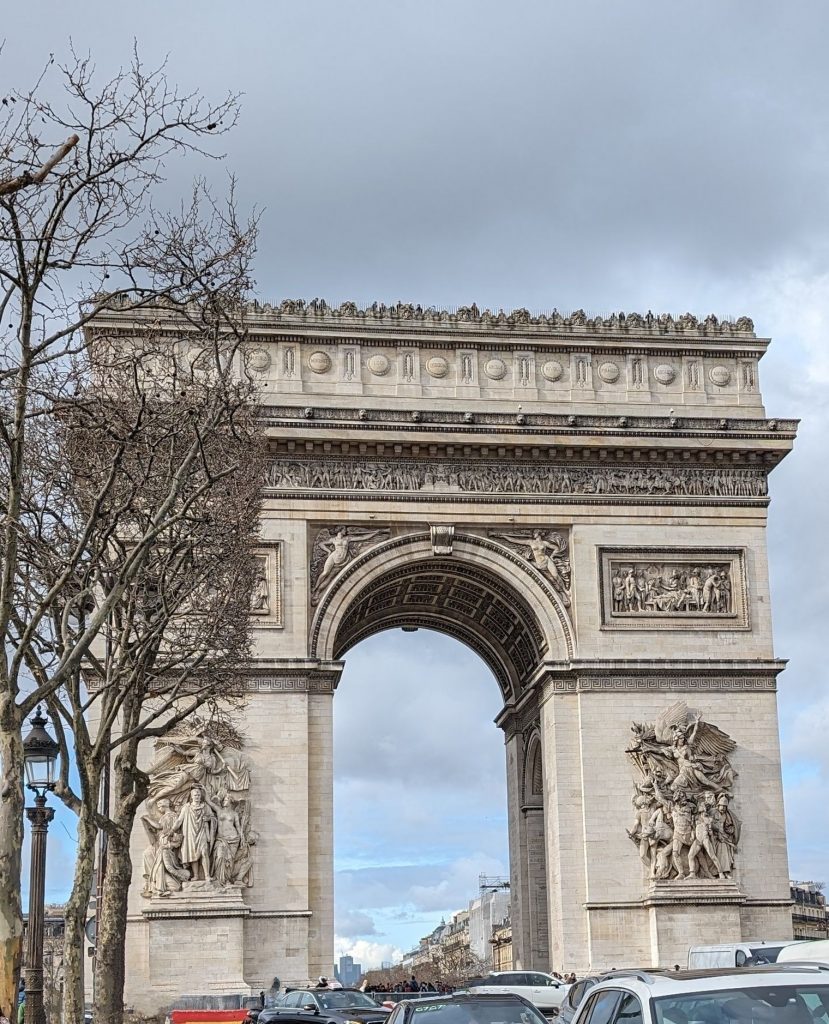
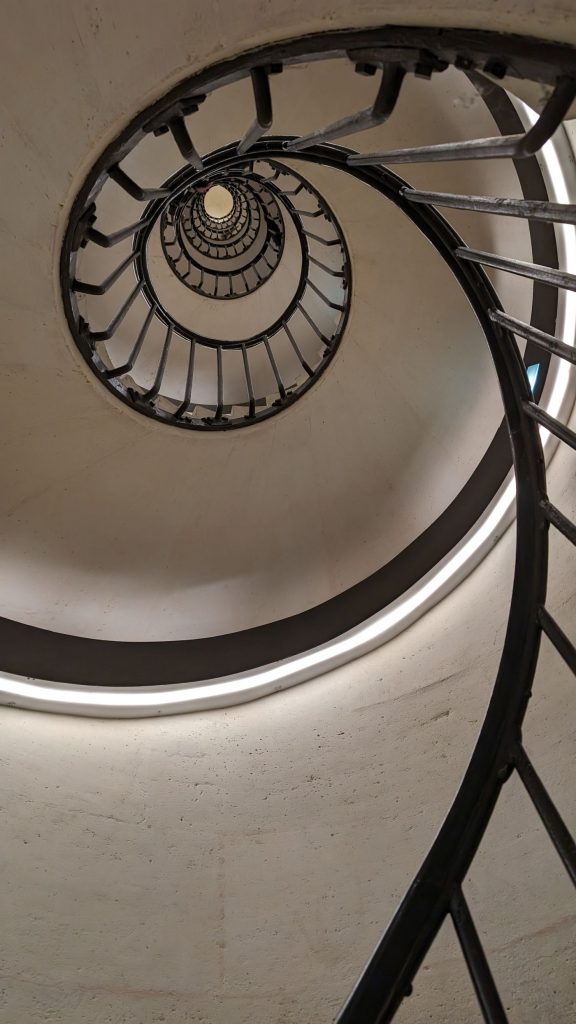
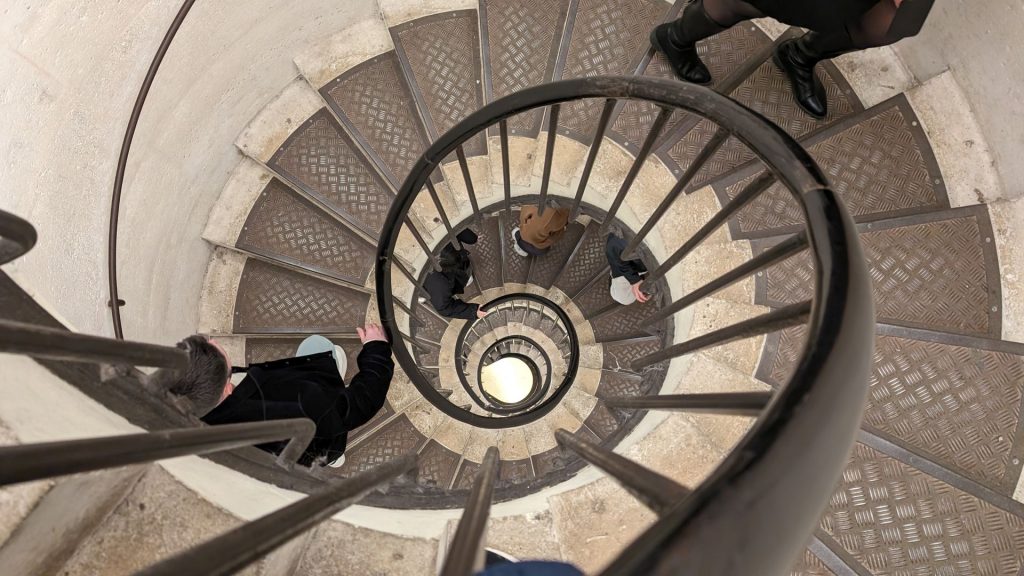
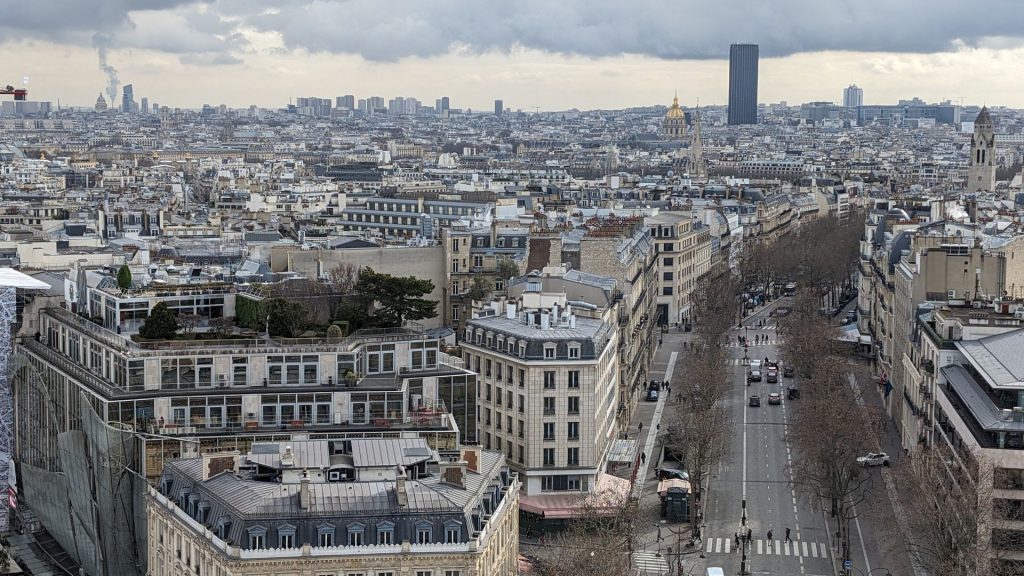
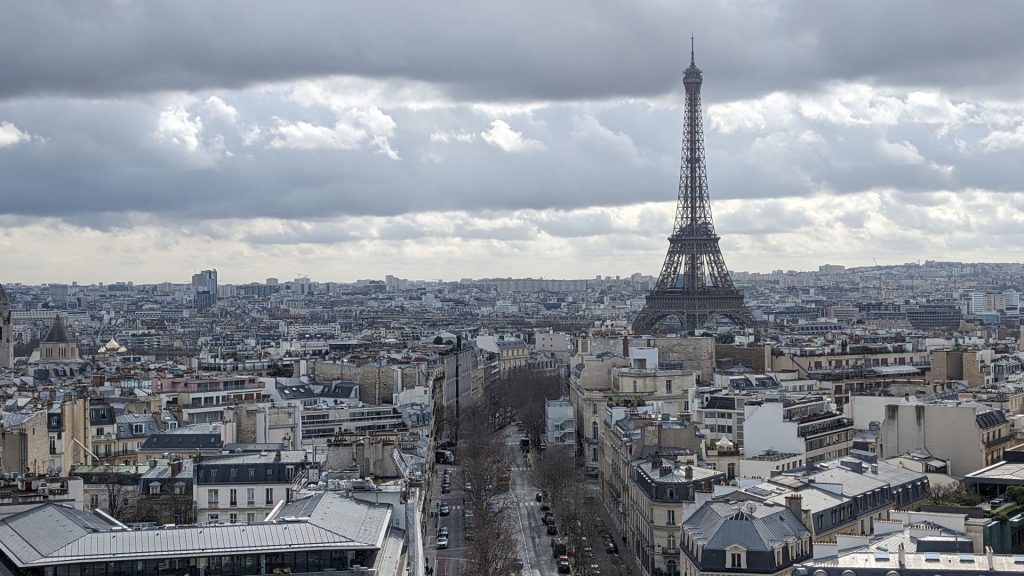
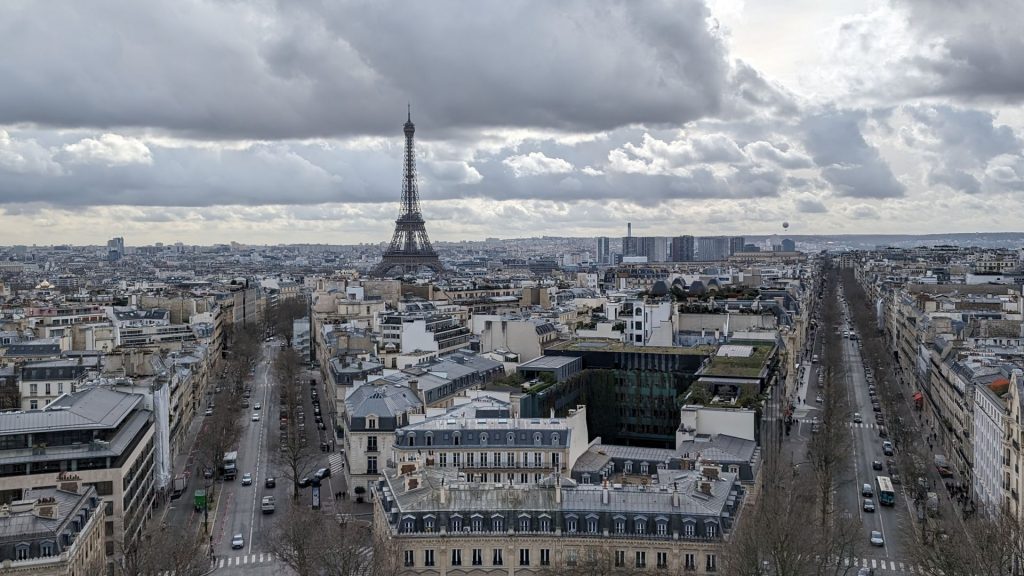
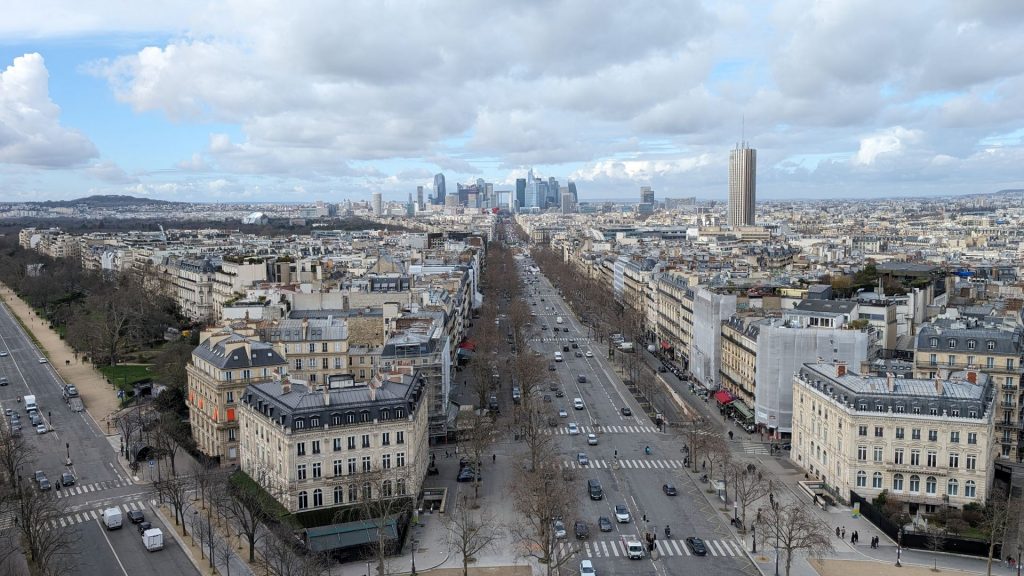
The Flame of Liberty (pictured below) is a full-sized, gold-leaf-covered replica of the flame of the torch from the Statue of Liberty. It measures approximately 3.5 meters in height.
It was offered to Paris in 1989 by the International Herald Tribune on behalf of donors who had contributed approximately $400,000 for its fabrication. It represented the culmination of that newspaper’s 1987 celebration of its hundredth anniversary of publishing an English-language daily newspaper in Paris. More importantly, the Flame was a token of thanks for the restoration work on the Statue of Liberty accomplished three years earlier by two French businesses that did artisanal work on the project, namely Métalliers Champenois, which did the bronze work, and the Gohard Studios, which applied the gold leaf. While the gift to France was prompted by the centennial of the newspaper, the Flame of Liberty, more broadly, is a lasting symbol of the friendship uniting the two countries, just as the statue itself was when it was given to the United States by France.
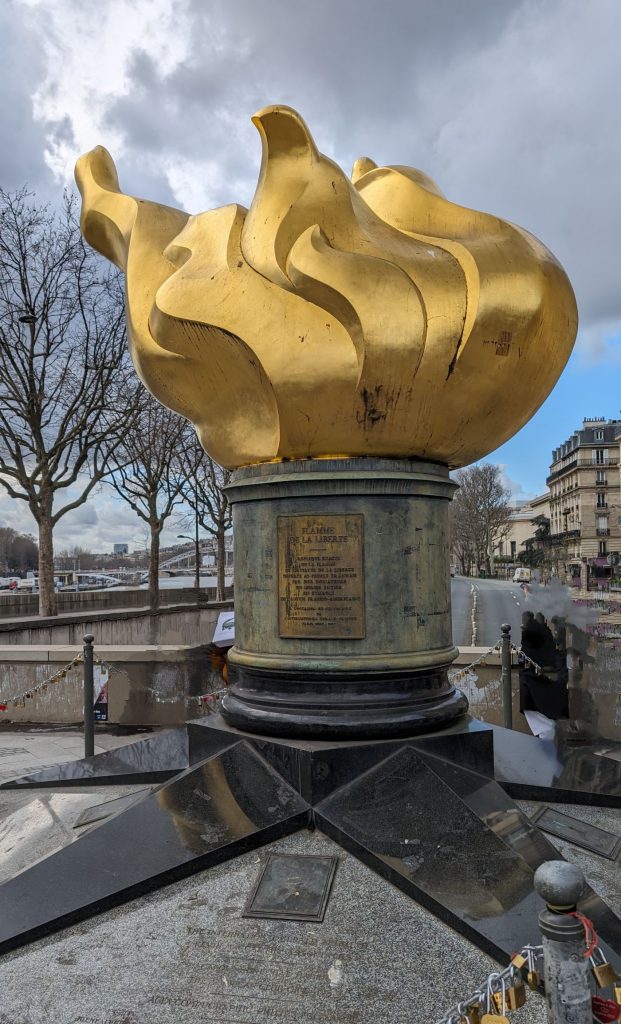
I am going to share our visit to the Eiffel Tower via pictures. It is so iconic, everyone knows what it is, so no background is necessary.
While the Tower has a total of 1,665 steps from the ground to the top, one can only climb 674 of them, from the ground to the second floor. The view from both the first and second floor is spectacular. The first floor also has an interesting exhibit. Let’s start with the views of and from the Tower. I should note that this was the only time the sun came out that day and it was only out for about one or two hours. Good timing for our photos!
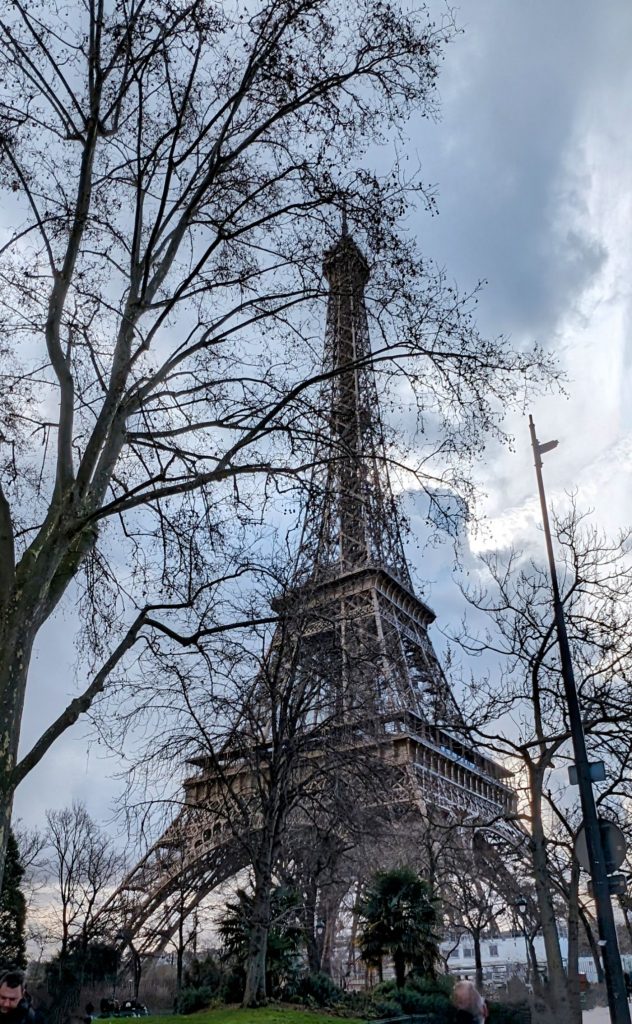
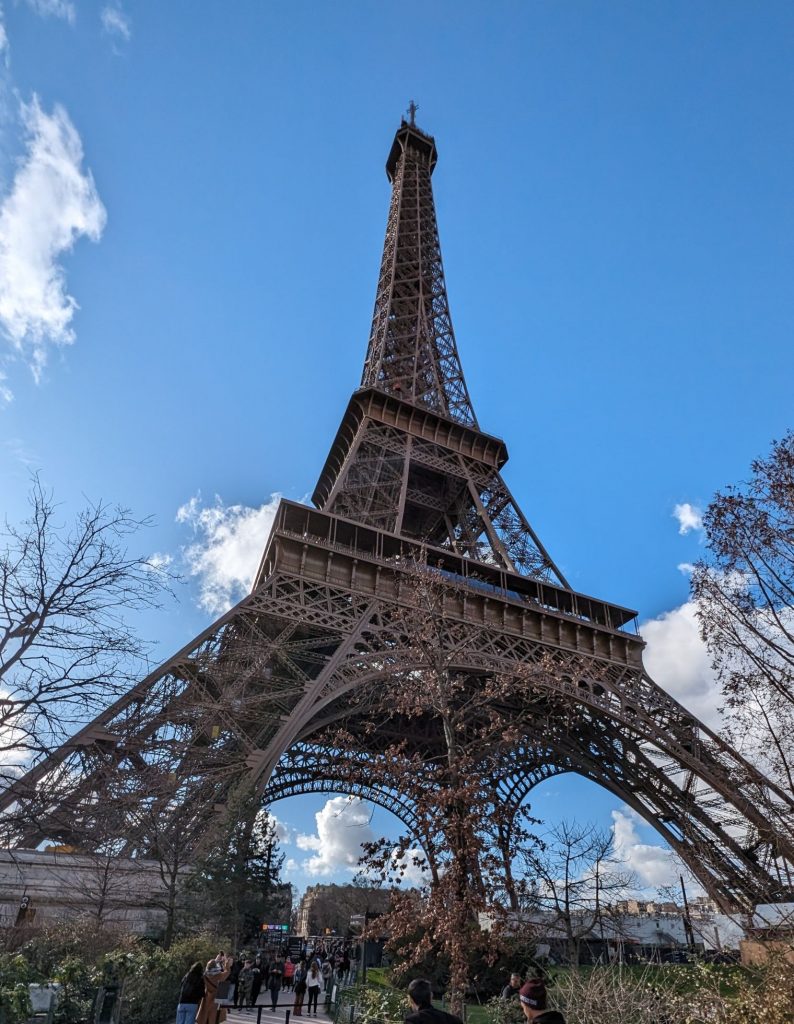
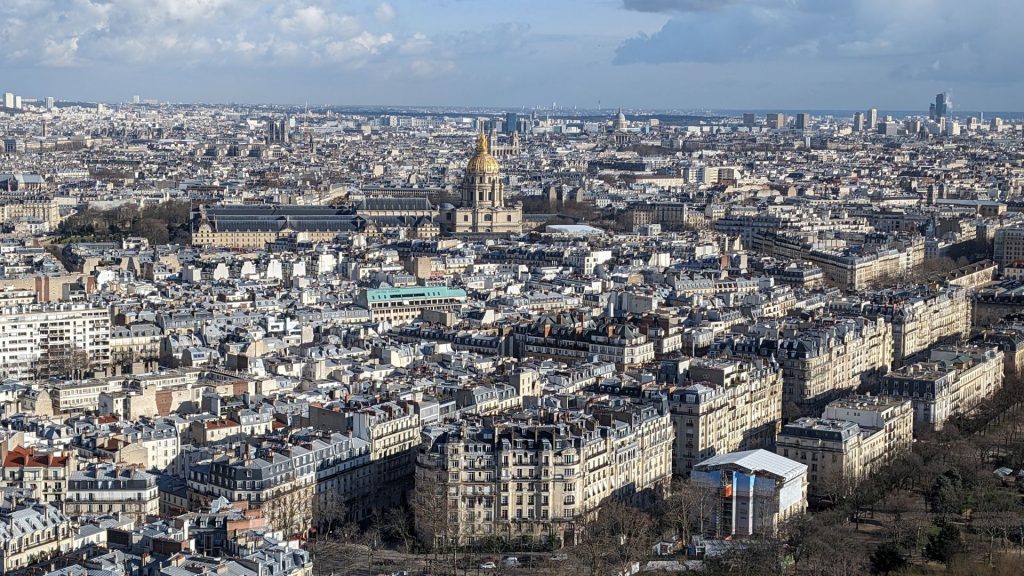
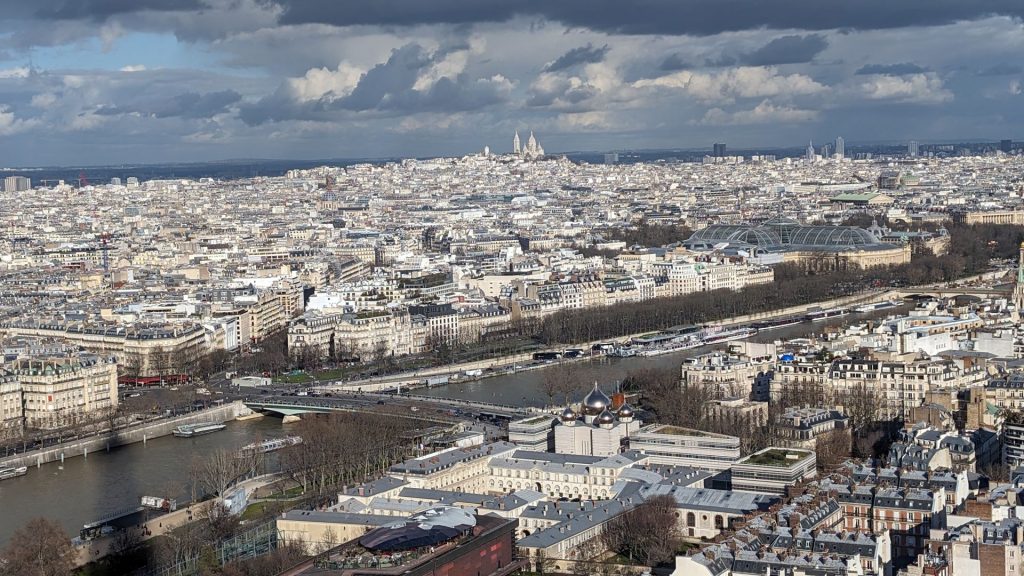
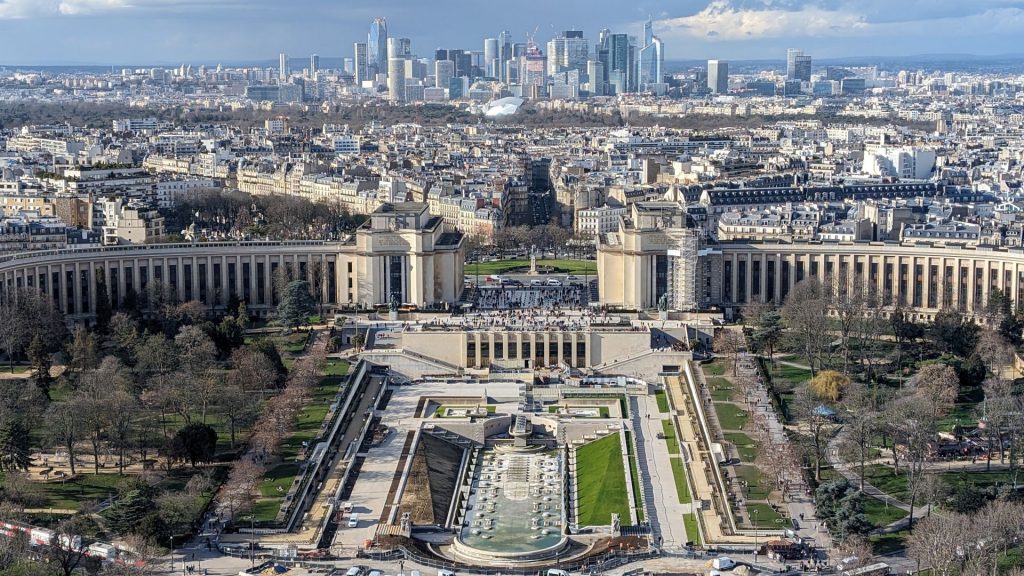
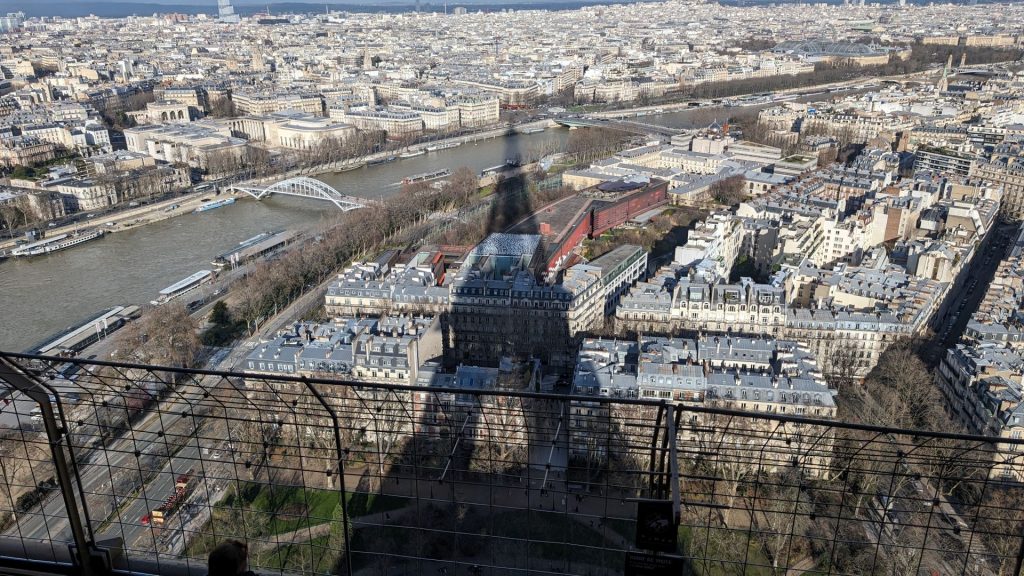
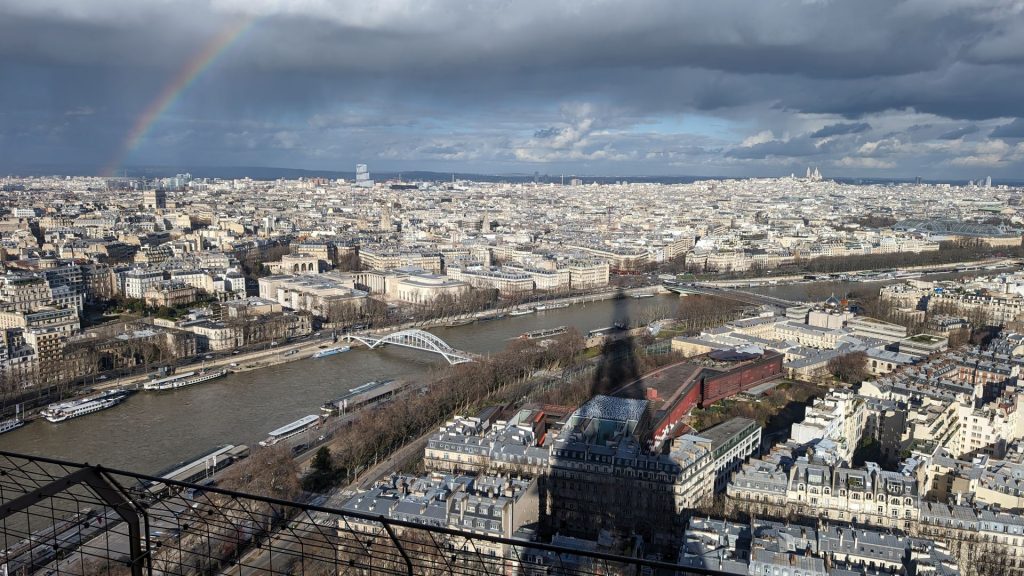
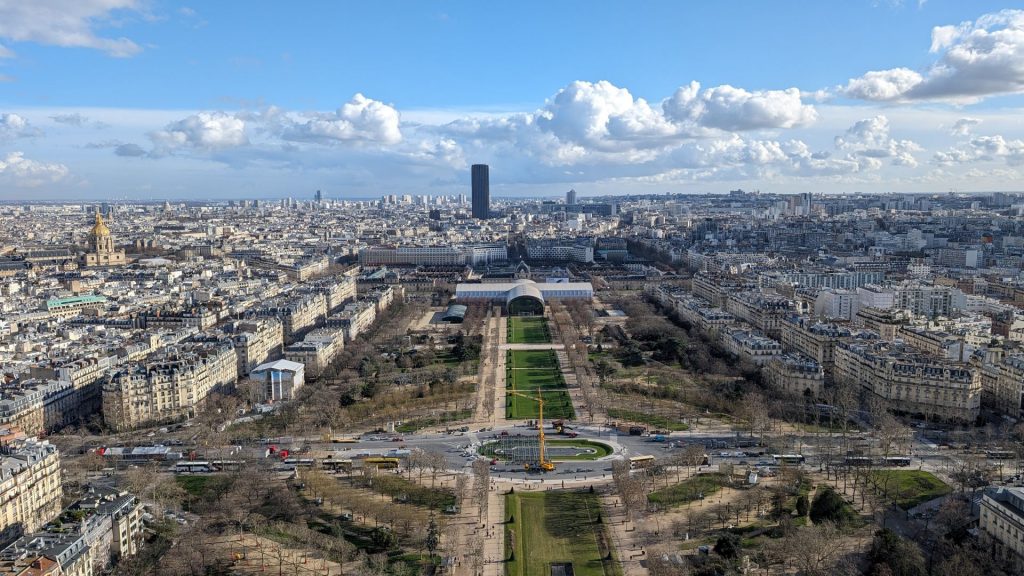
There was an exhibit on the first floor that I found to be of great interest. It is called “A Larger-Than-Life Arena: 135 years of sporting feats at the Eiffel Tower.” This free exhibition retraces the major sporting moments and most unique challenges that have marked the monument’s history. Described thusly: “Through 20 chronological panels, discover the craziest feats accomplished by athletes, artists and thrill-seekers. From the most unusual to the most dizzying, admire archival images and modern shots that will transport you to the fascinating world of the Eiffel Tower.”
It was publicized as opening on 2.13.2024. We were there on 2.12.24, so it might not have been completed. Anyway, check out these crazy feats!
Various races up the 729 stairs that separate the Tower’s second floor from the ground have been organized since 1905, forerunners of what is now referred to as “The Vertical race.” The first winner was named Forestier and made the climb in 3 minutes and 12 seconds.
Others have climbed the stairs on stilts – a baker from Landes, Sylvain Doinon, in 1891 – on their knees, their hands, hopping on one leg, on a motorcycle in 1983, in 50 minutes on a mountain bike in 1987, and even on a unicycle in 2006! A one-legged, 39-year-old man named Gilbert Dutrieux made the ascent in one hour in 1959.
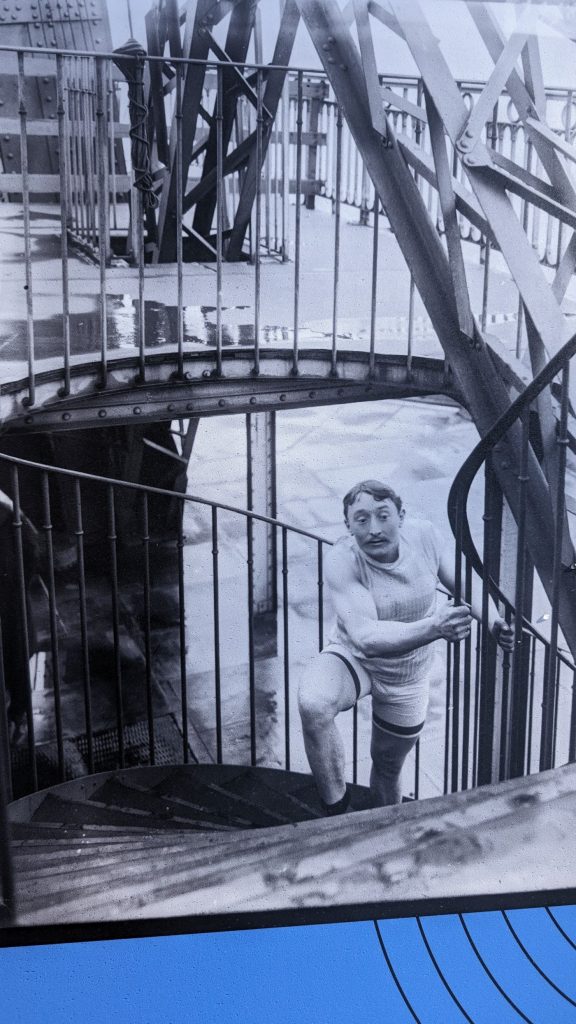

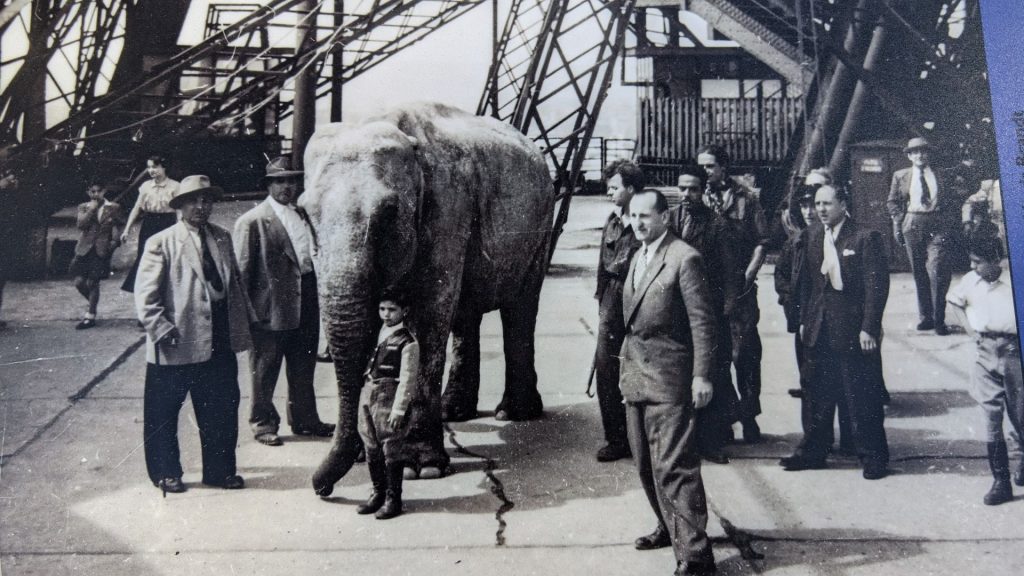
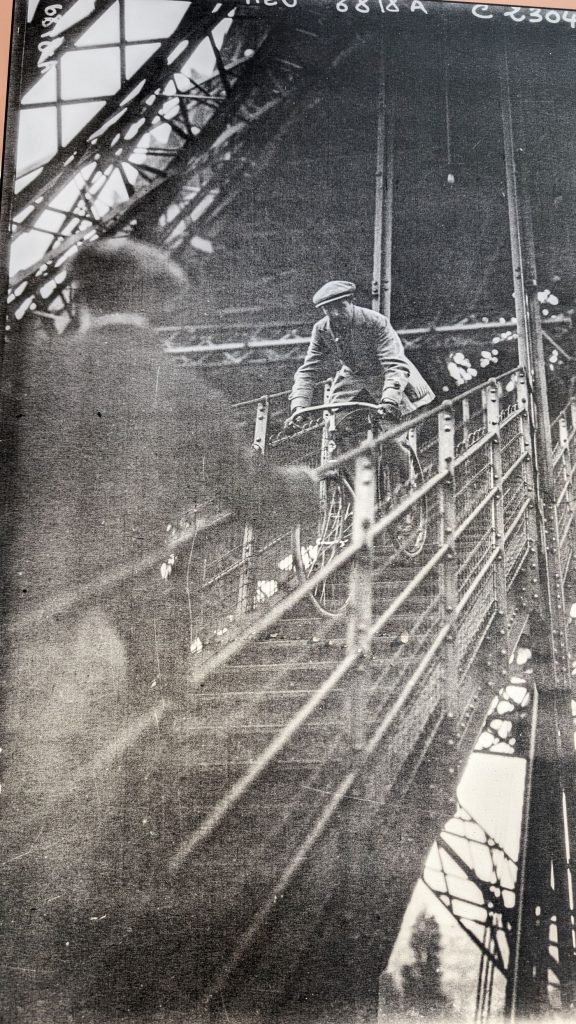
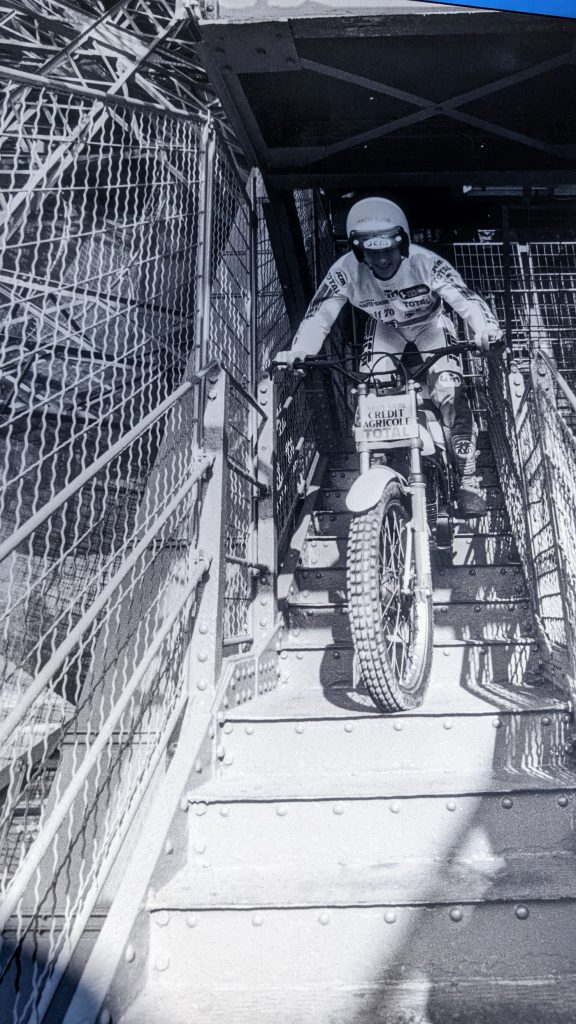

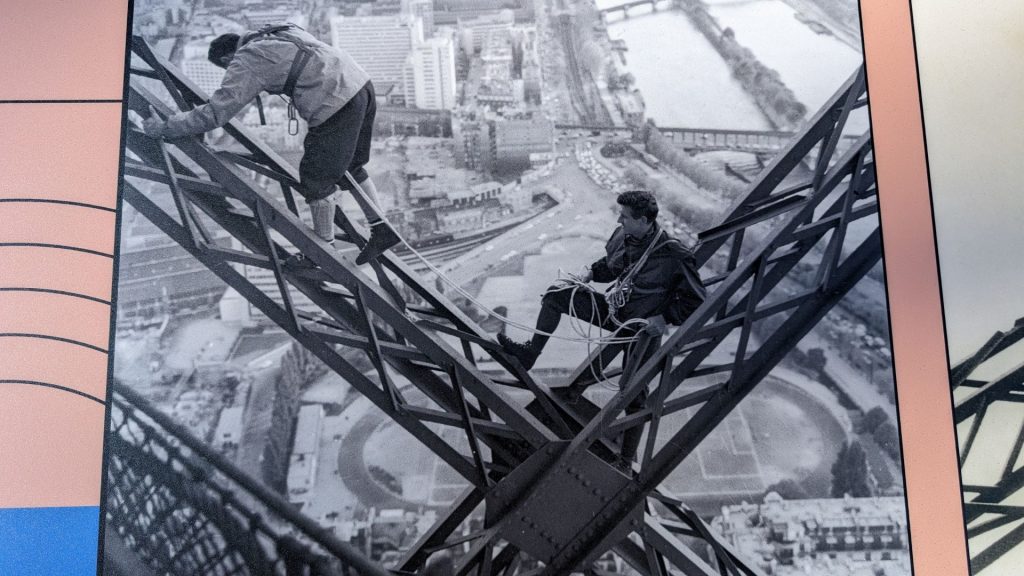

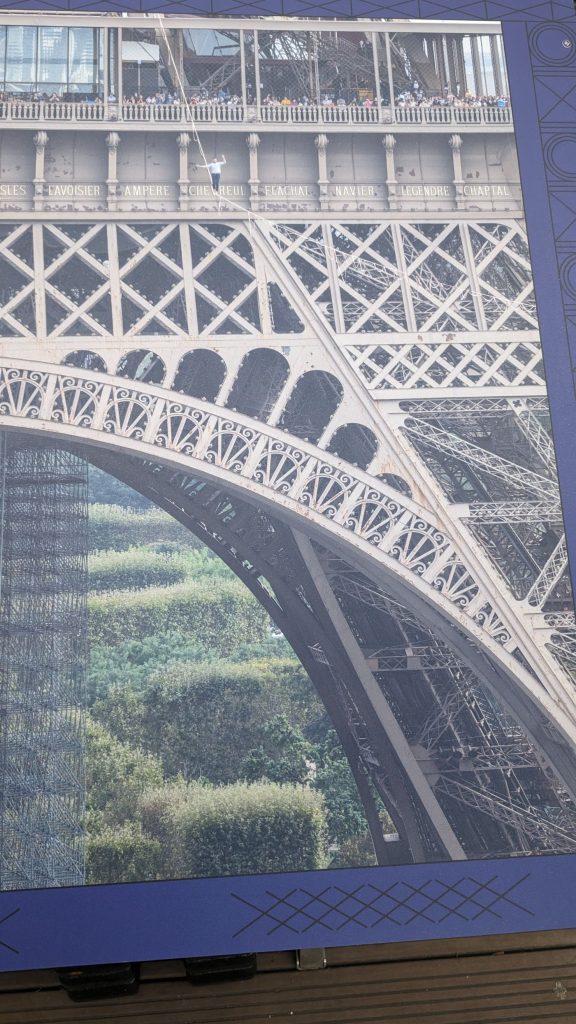
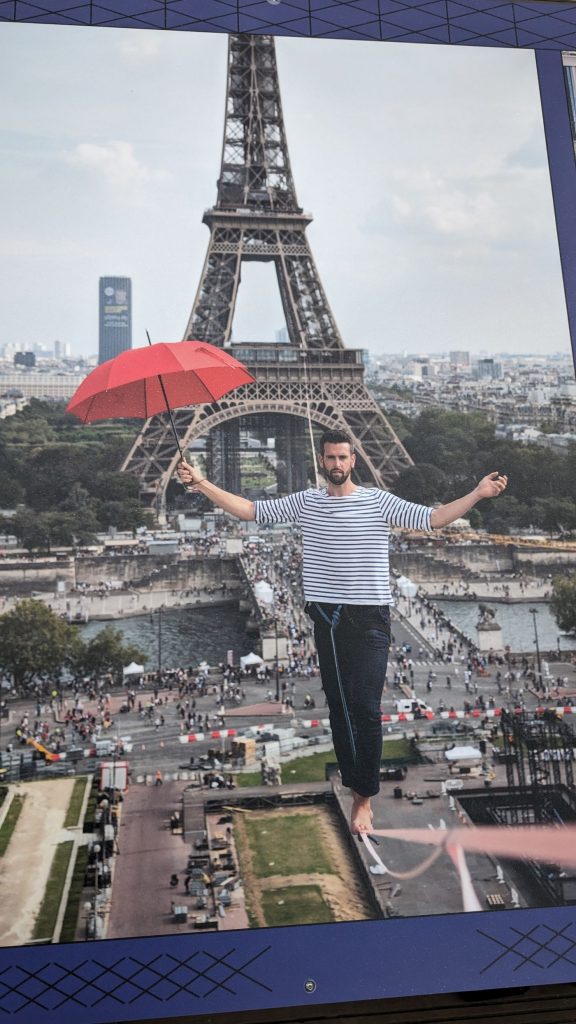
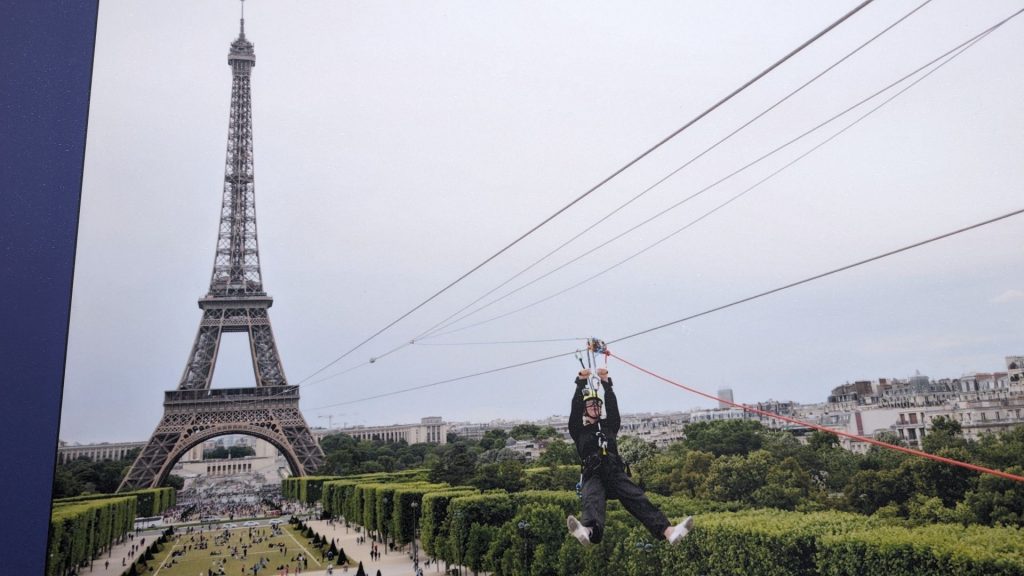
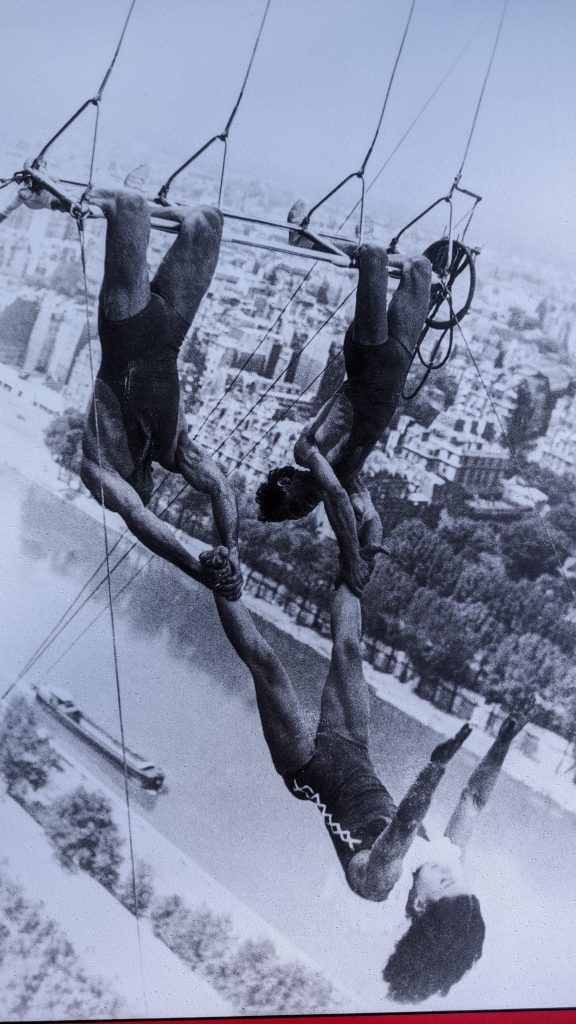
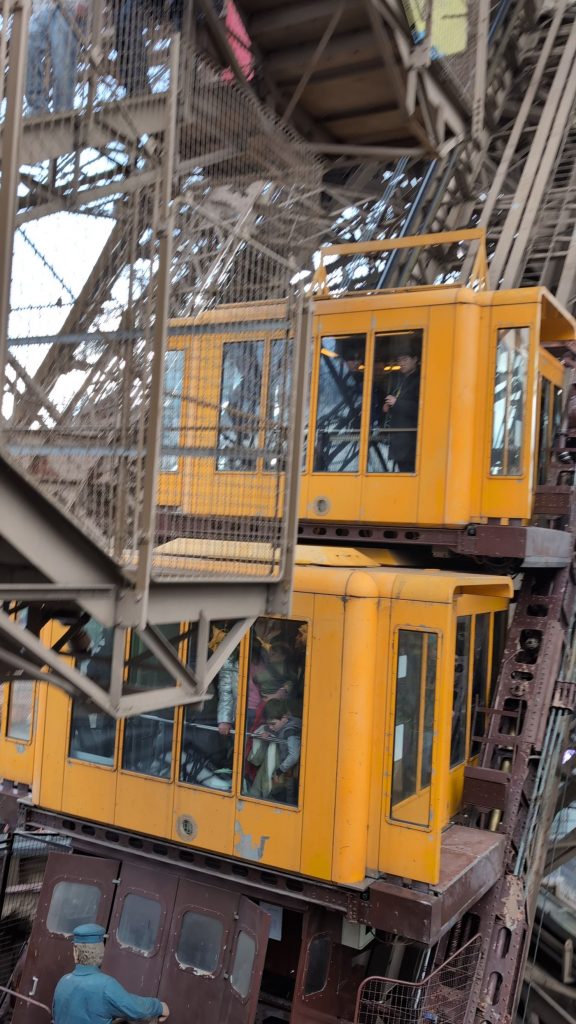
It was time to fly to Minnesota. I’ll share our visit to Paris Disneyland and other parts of France in the next blog.
